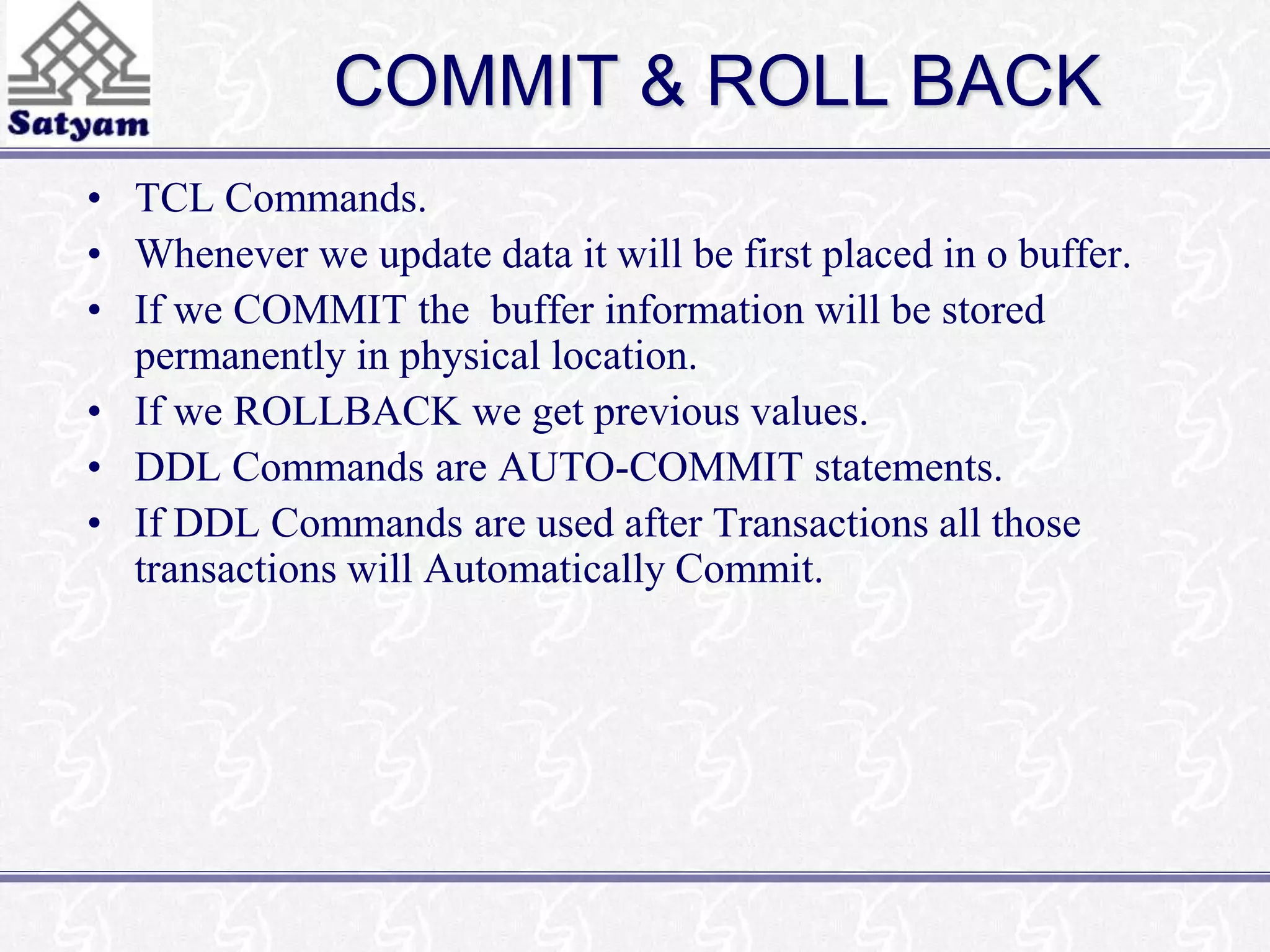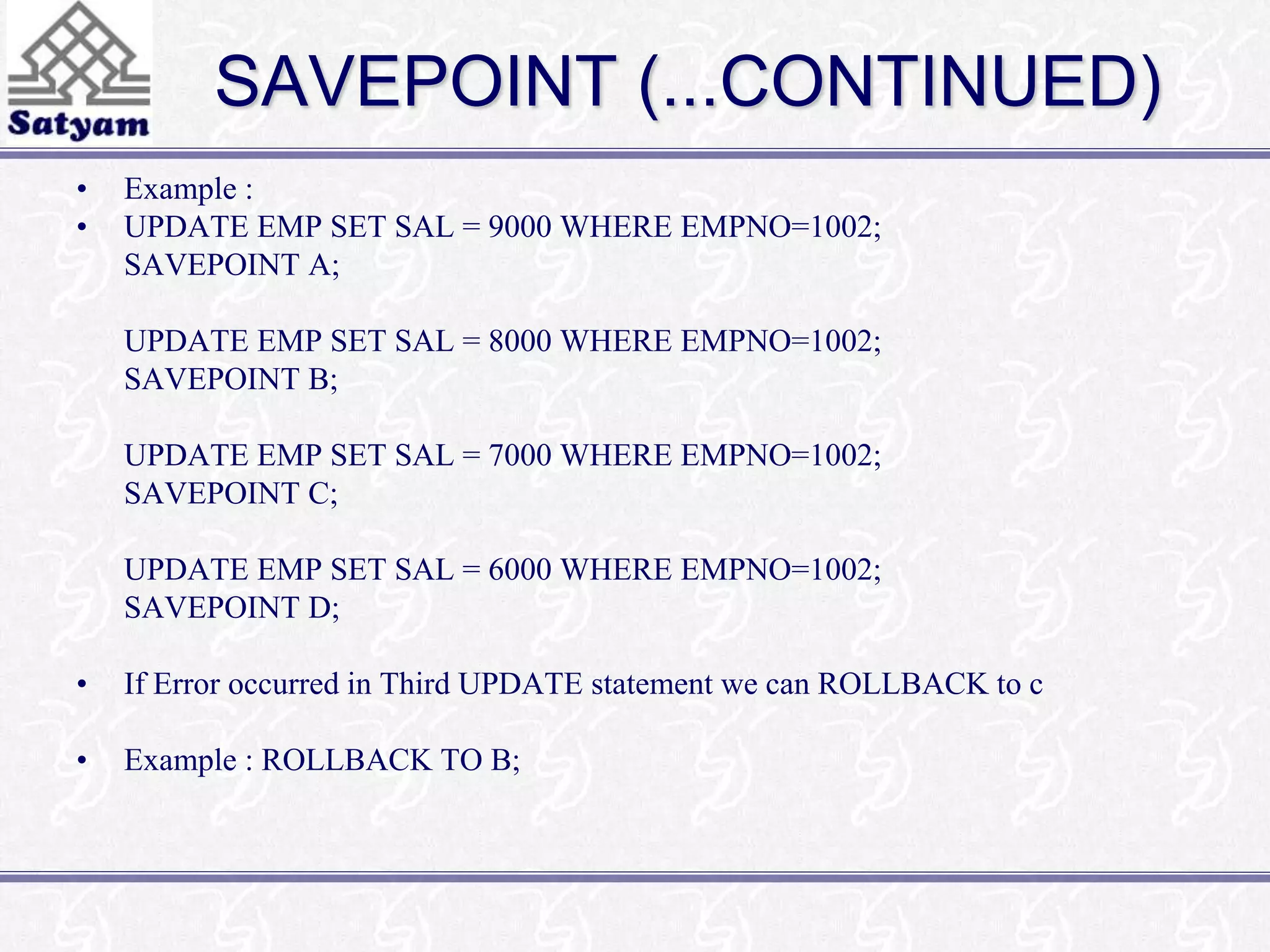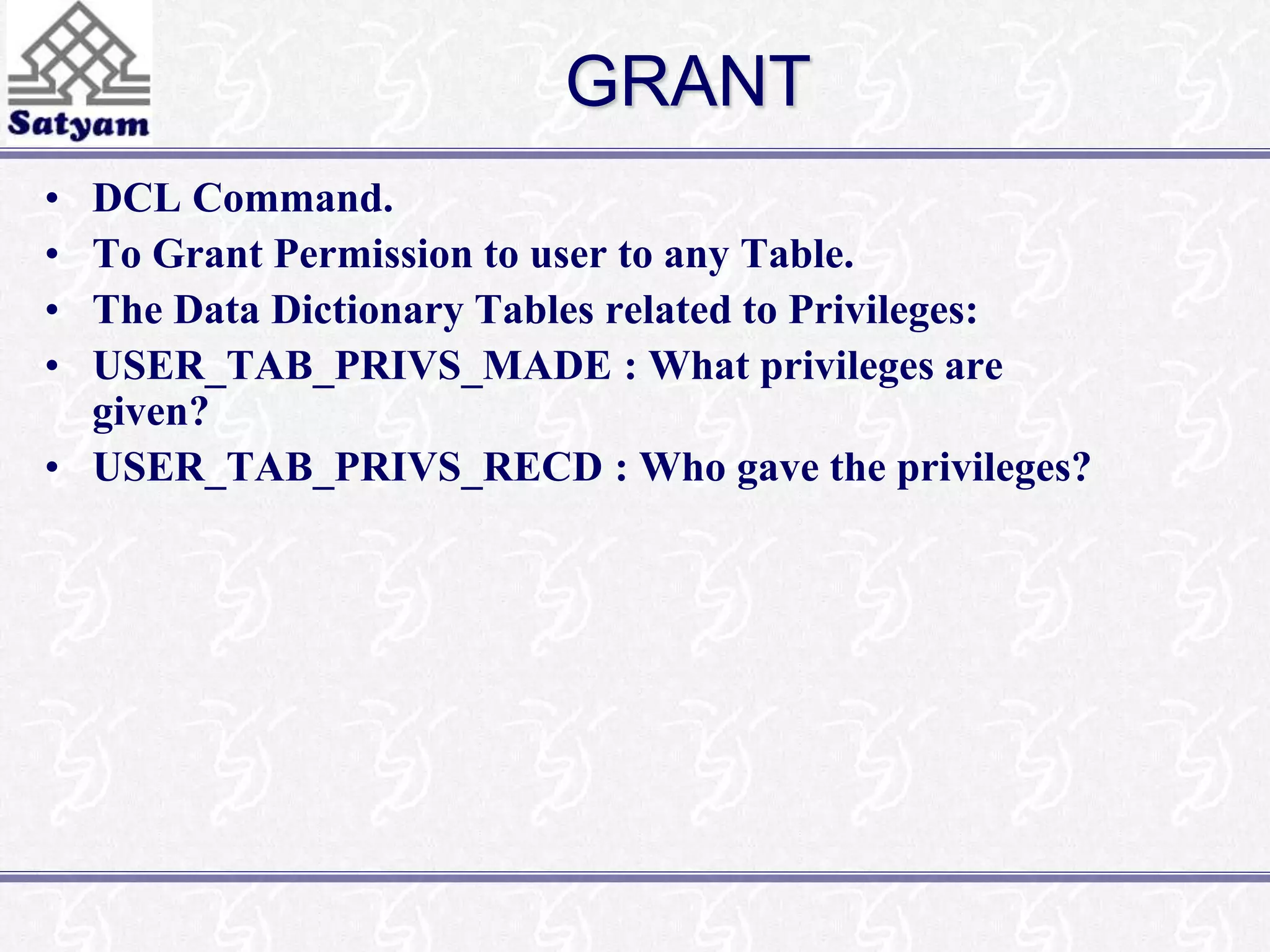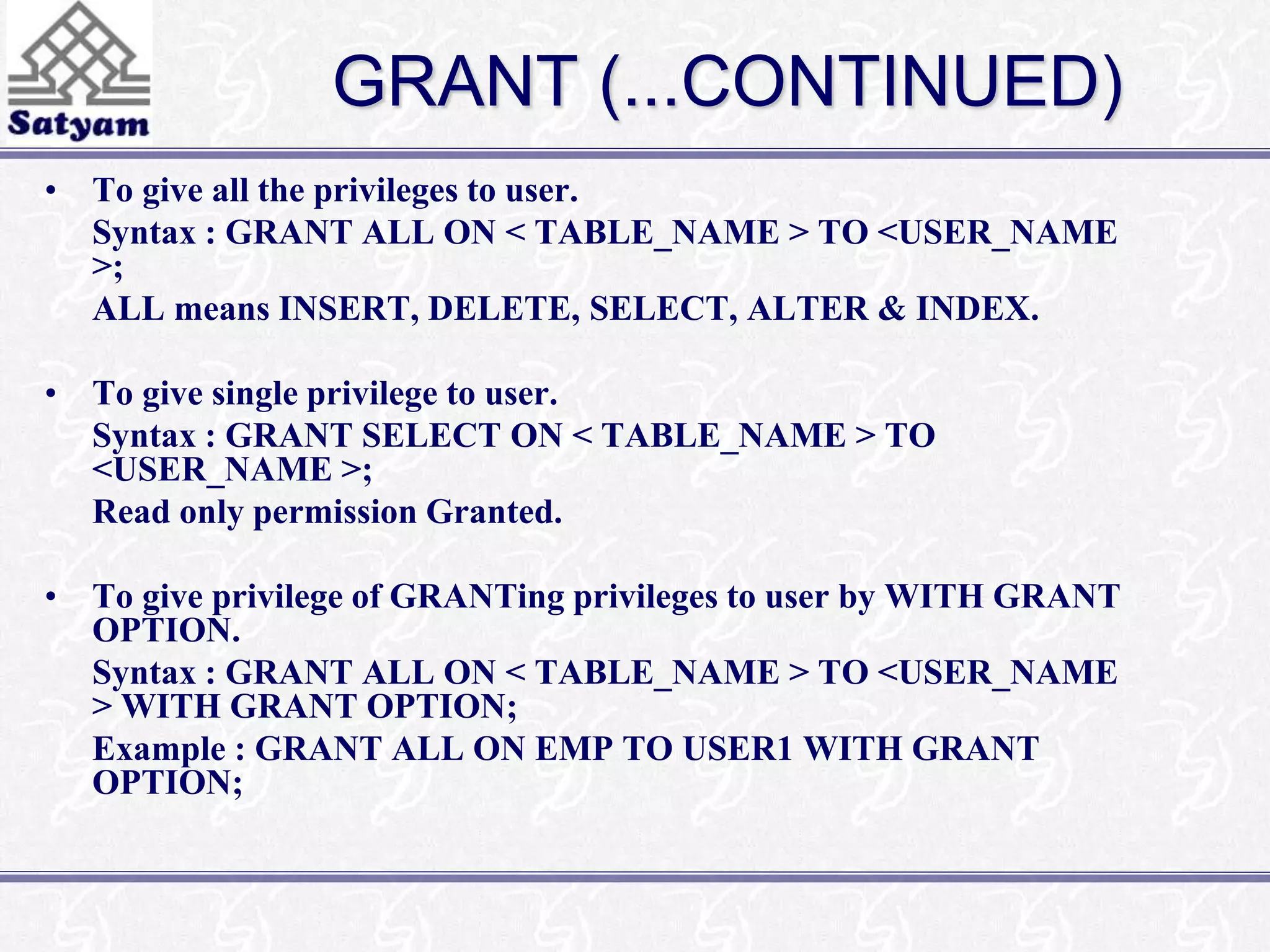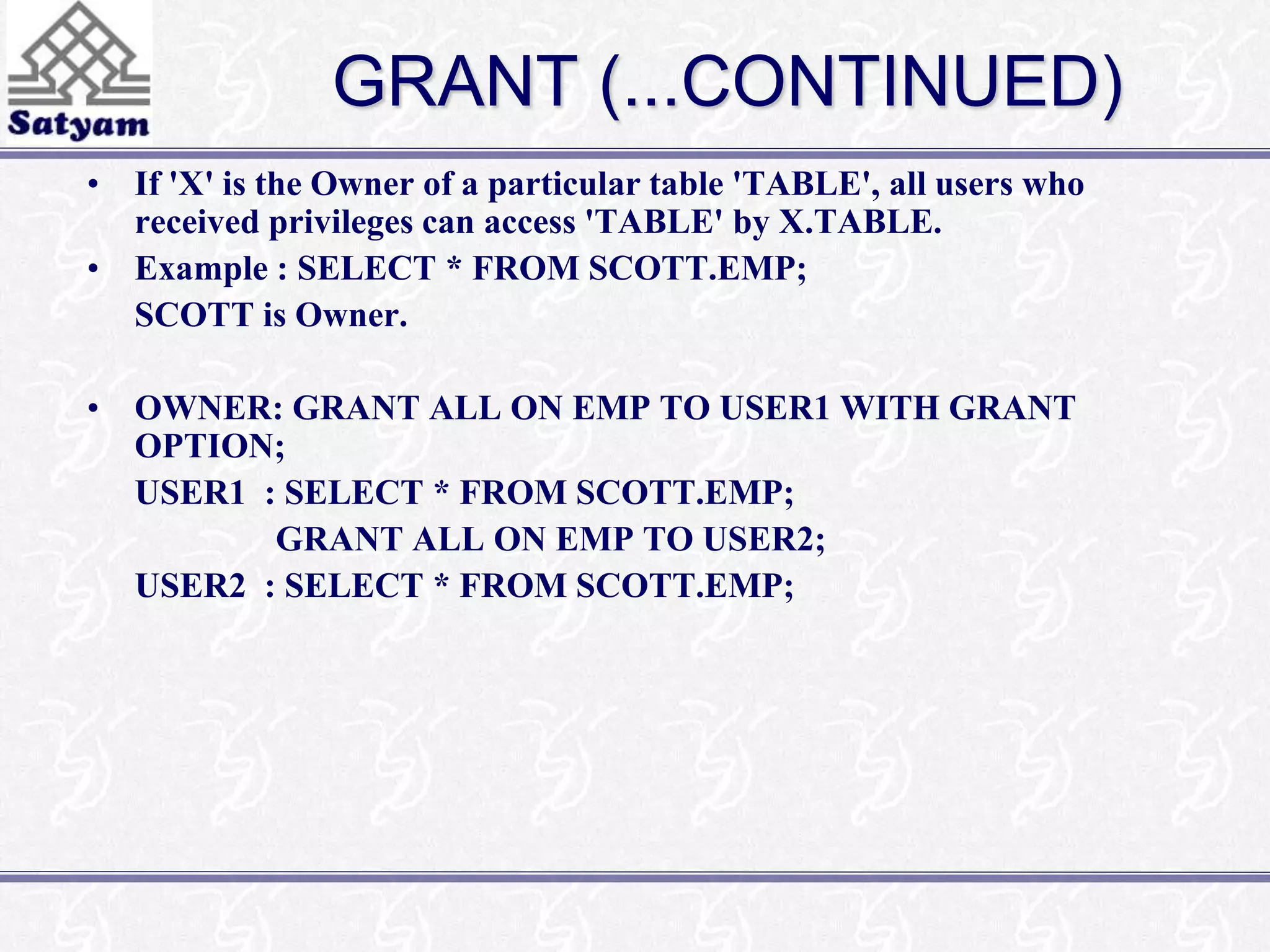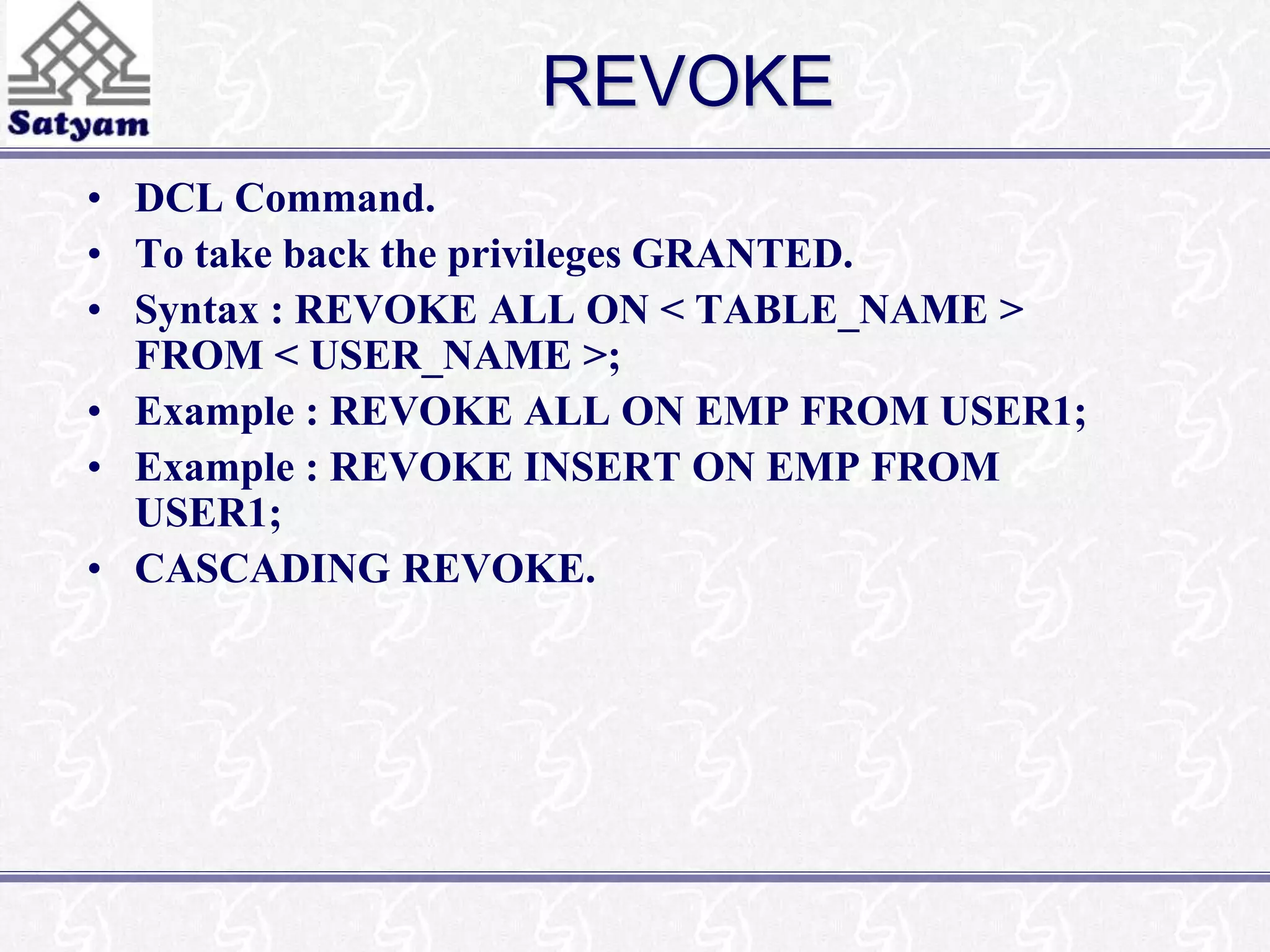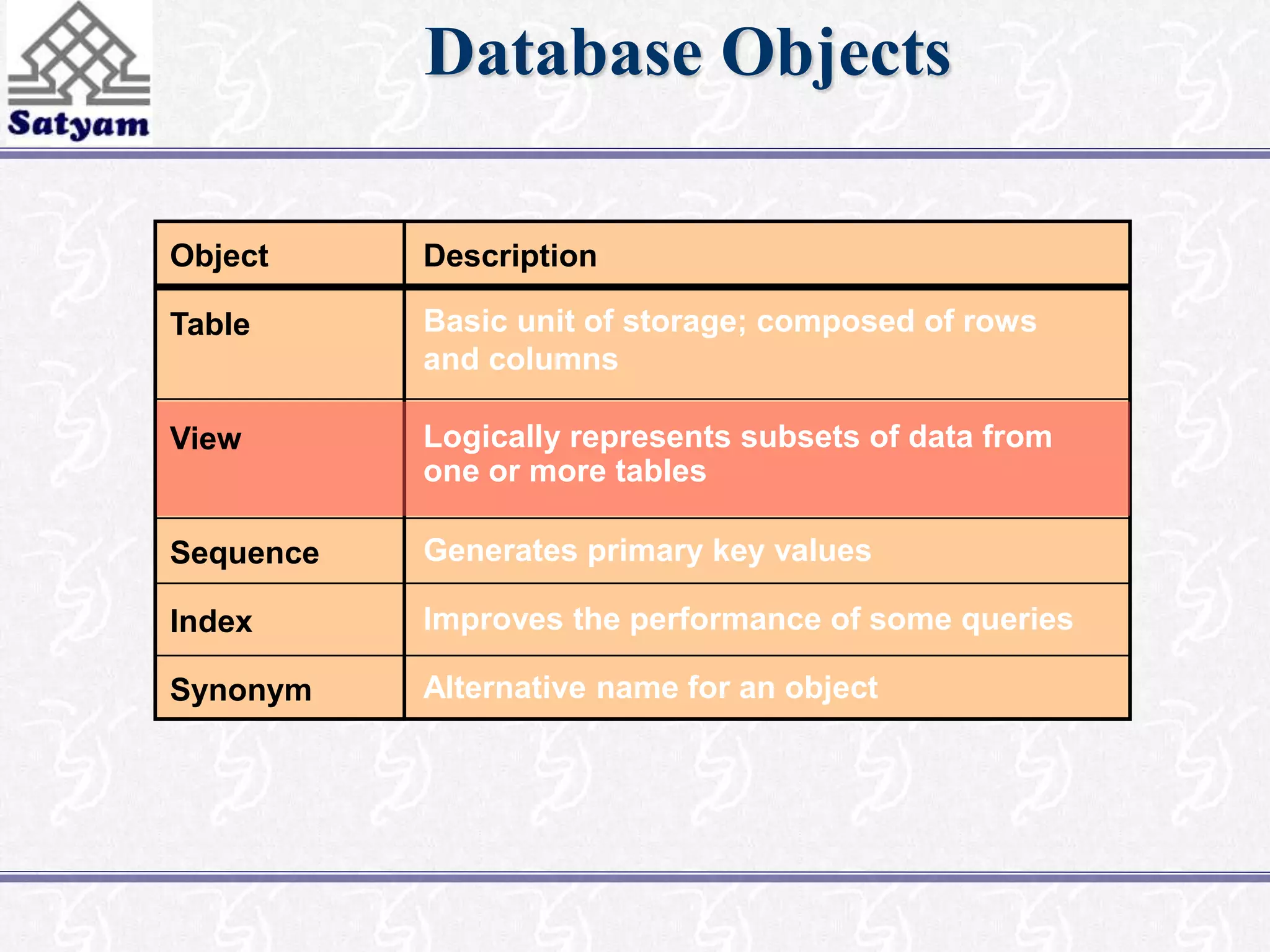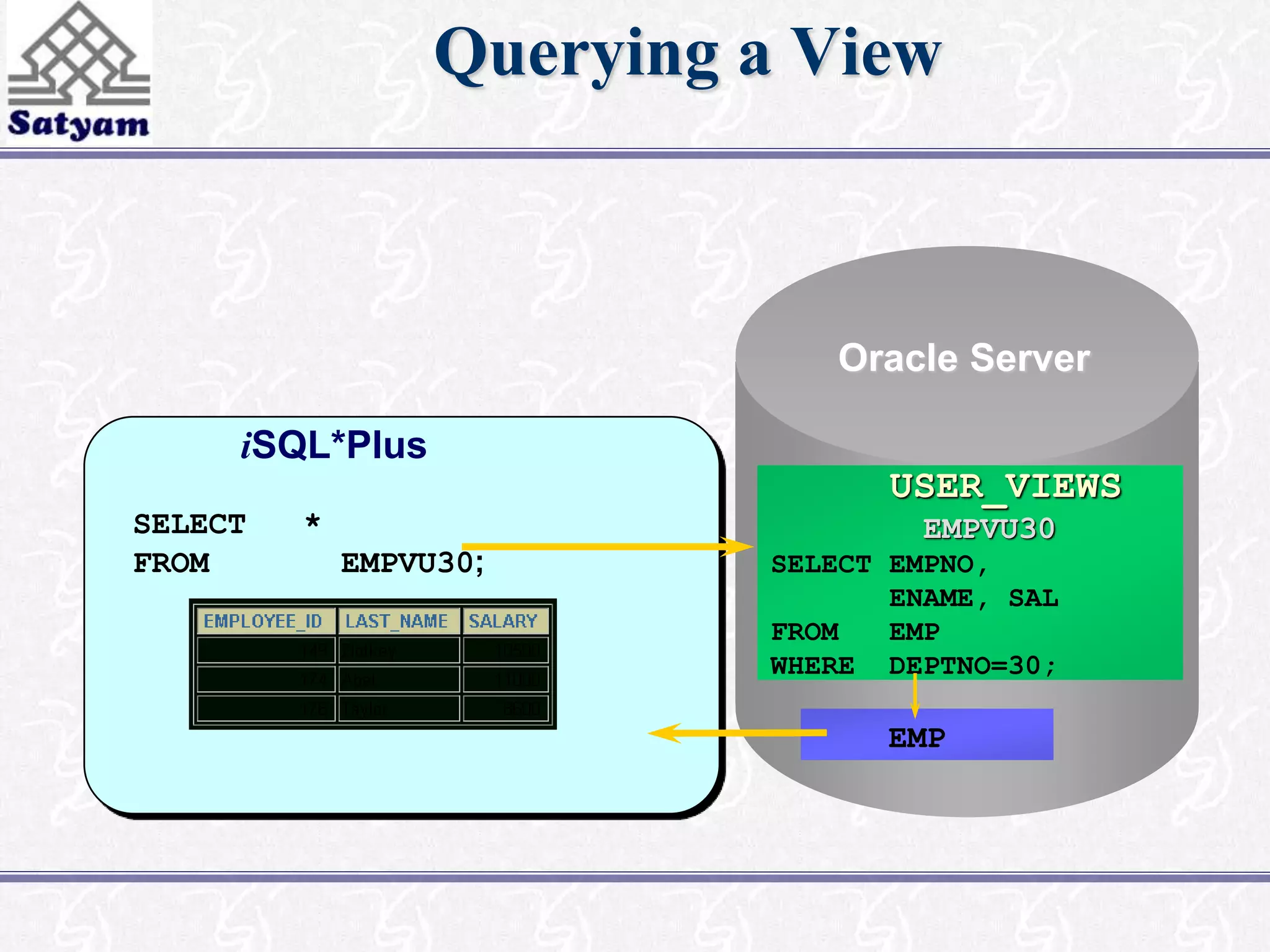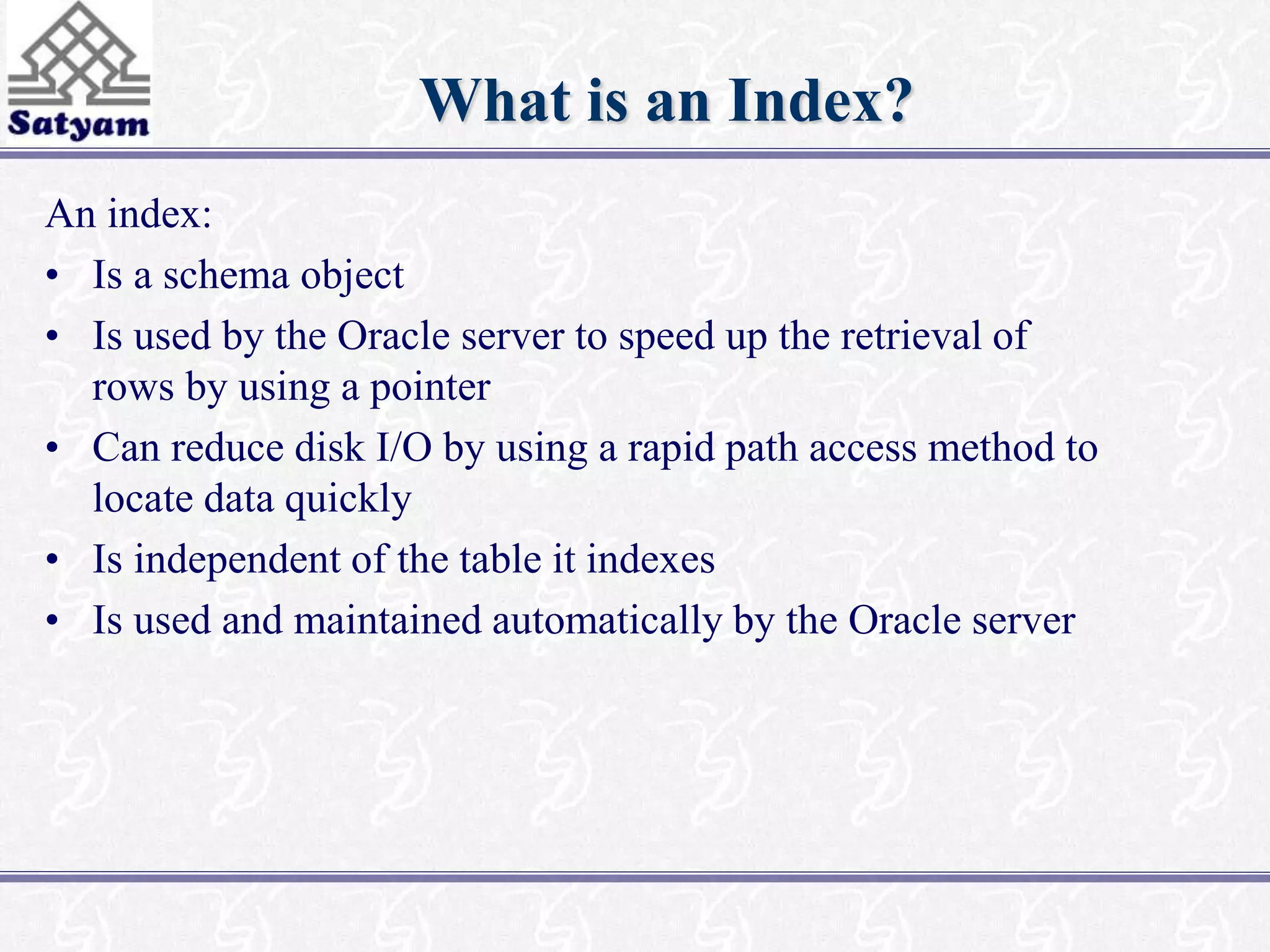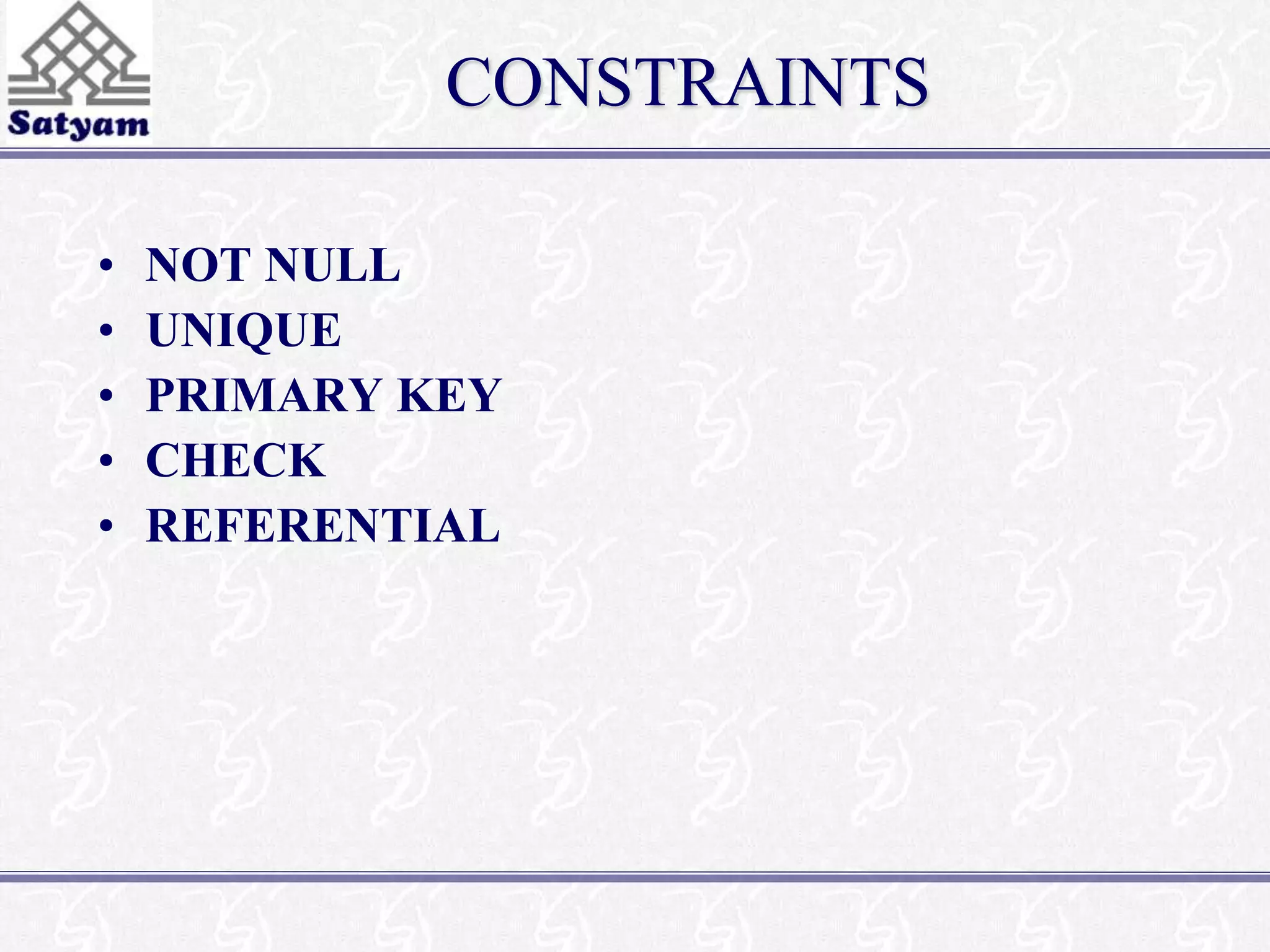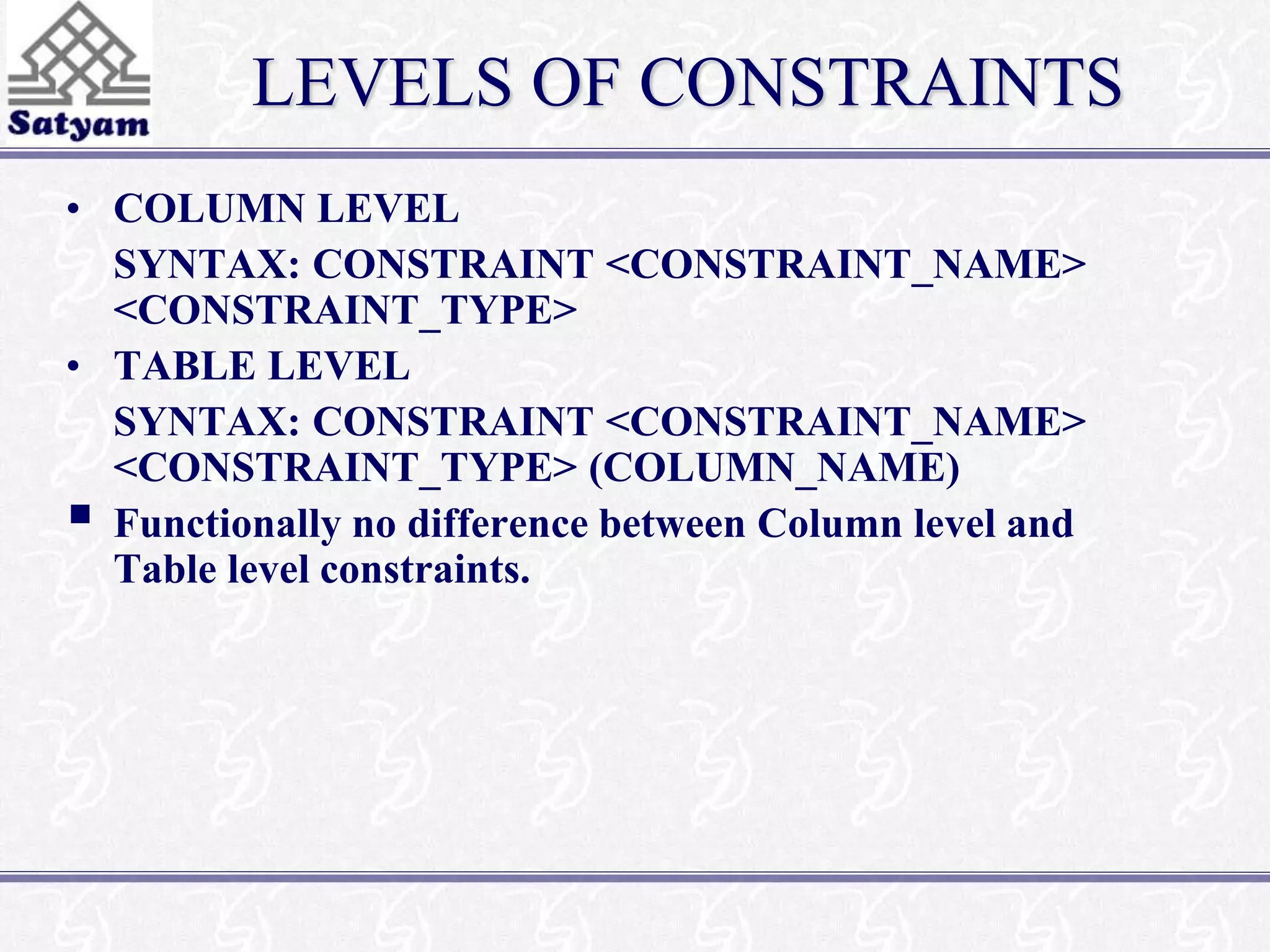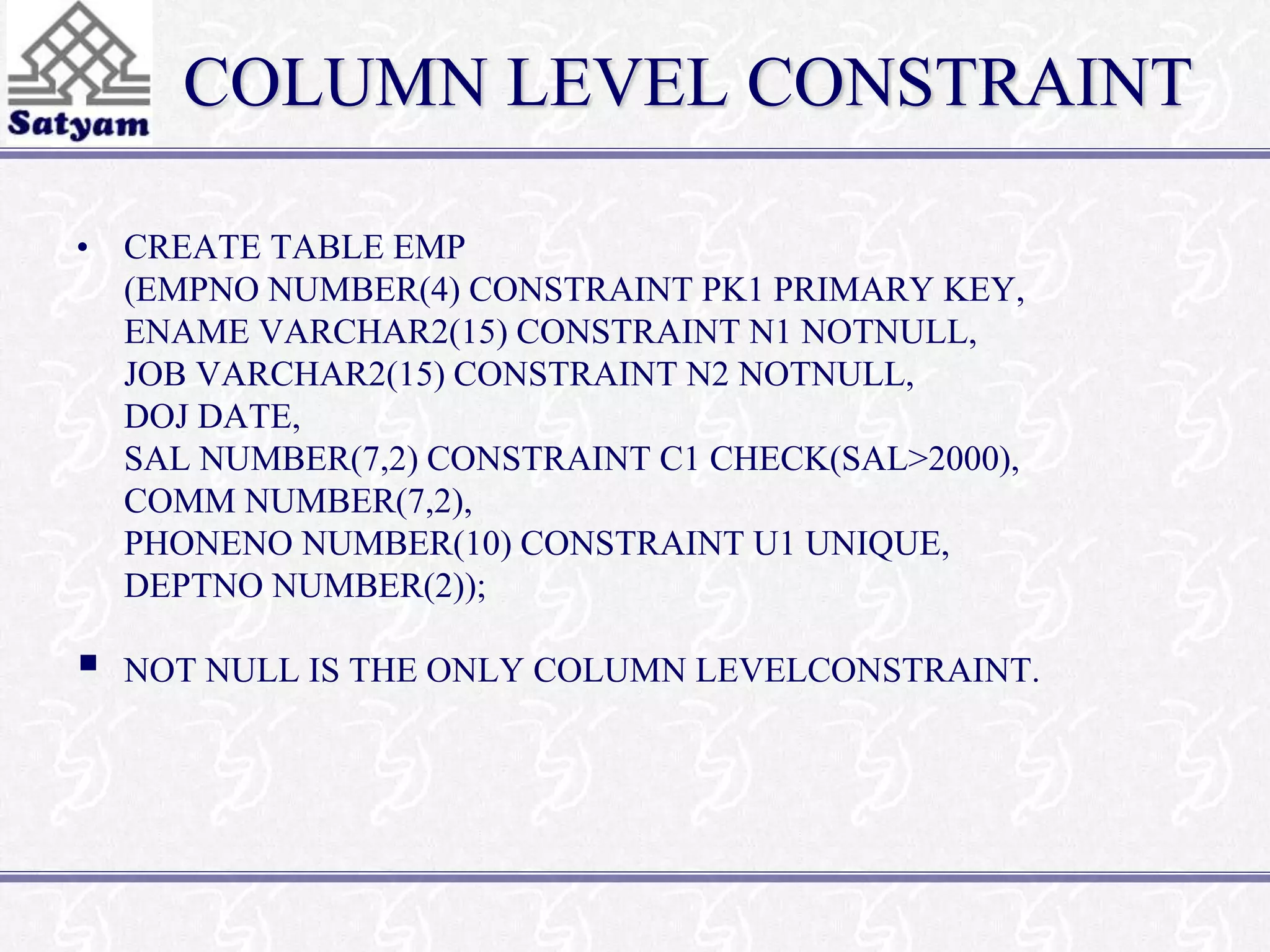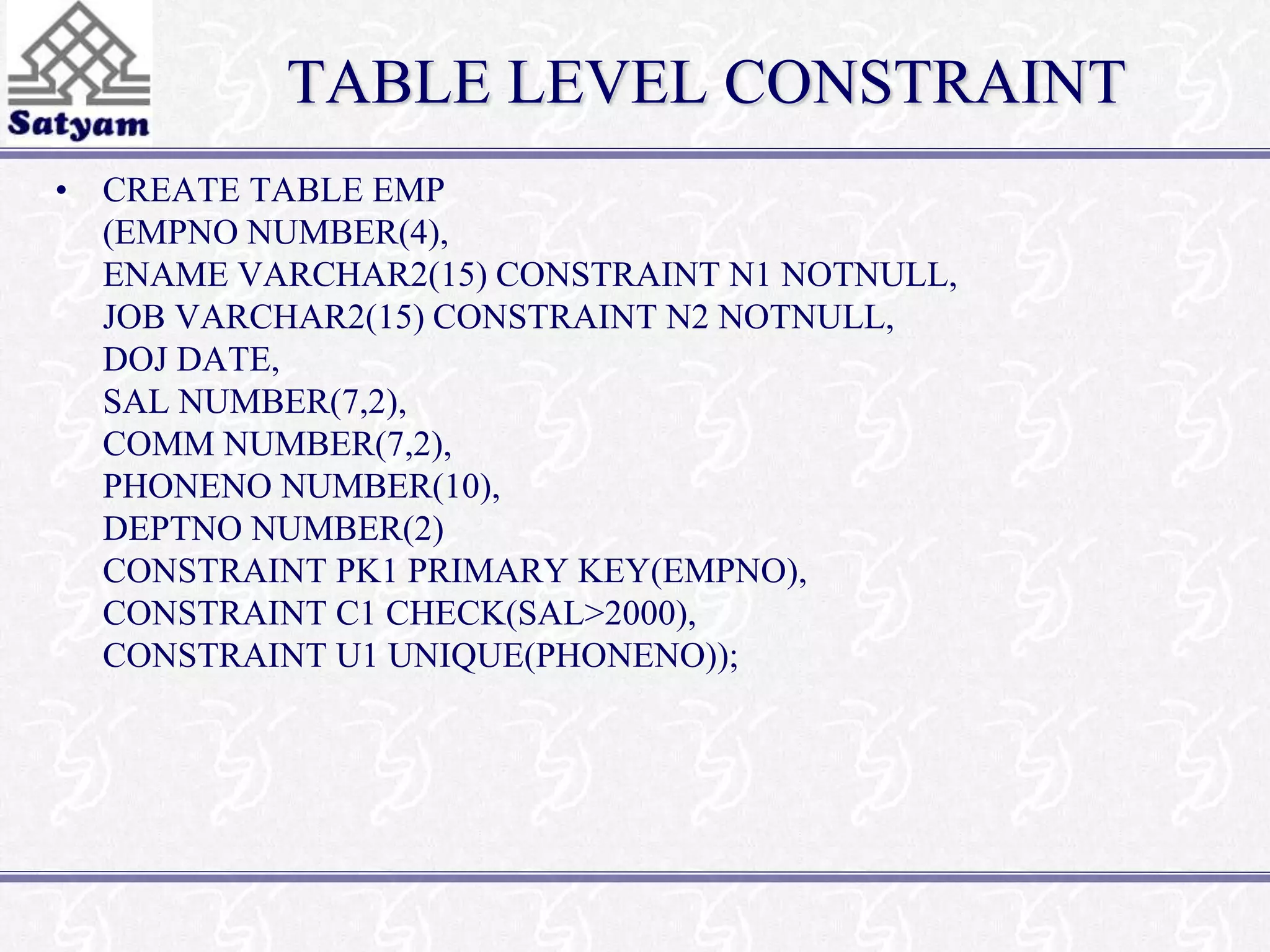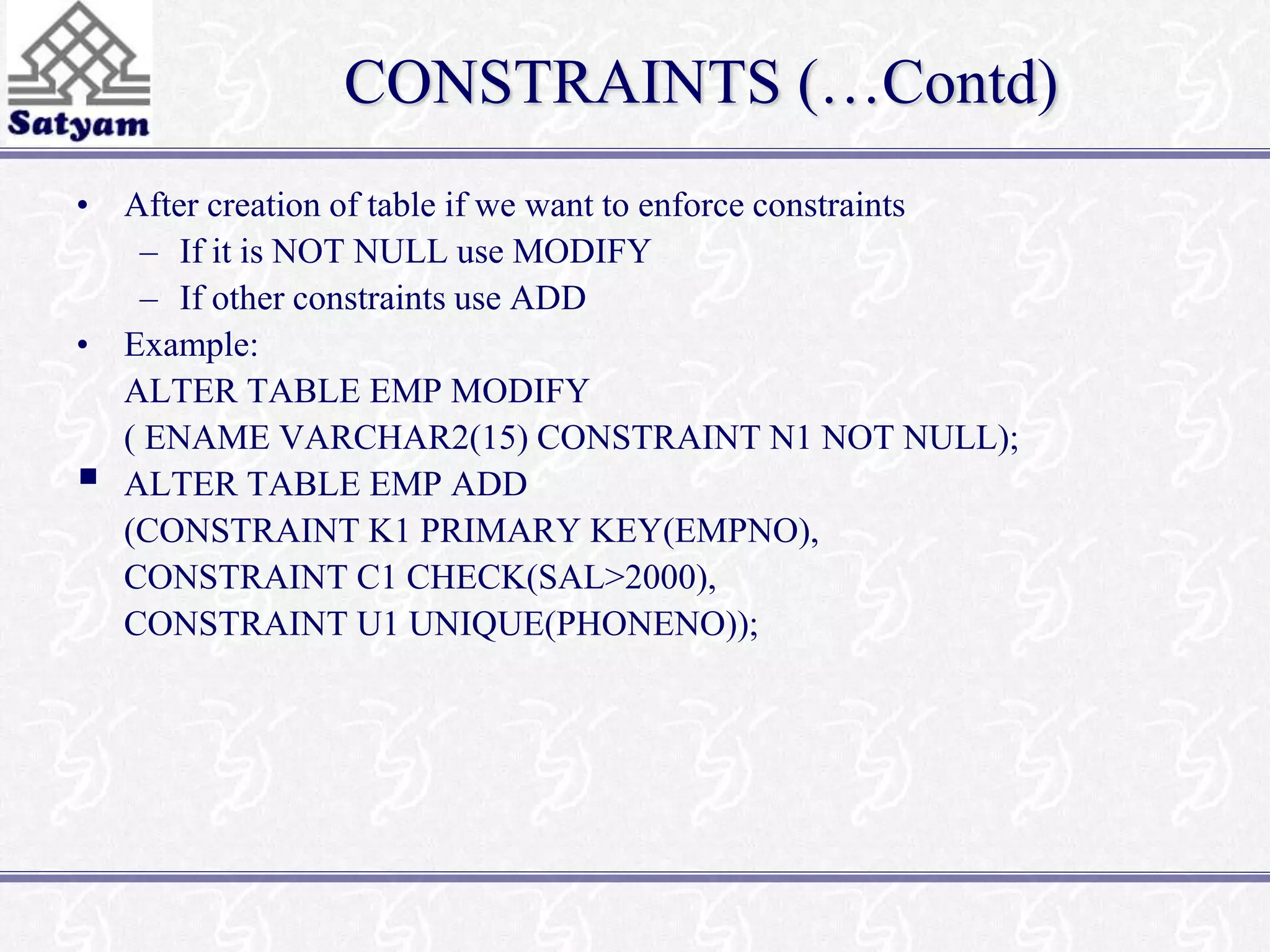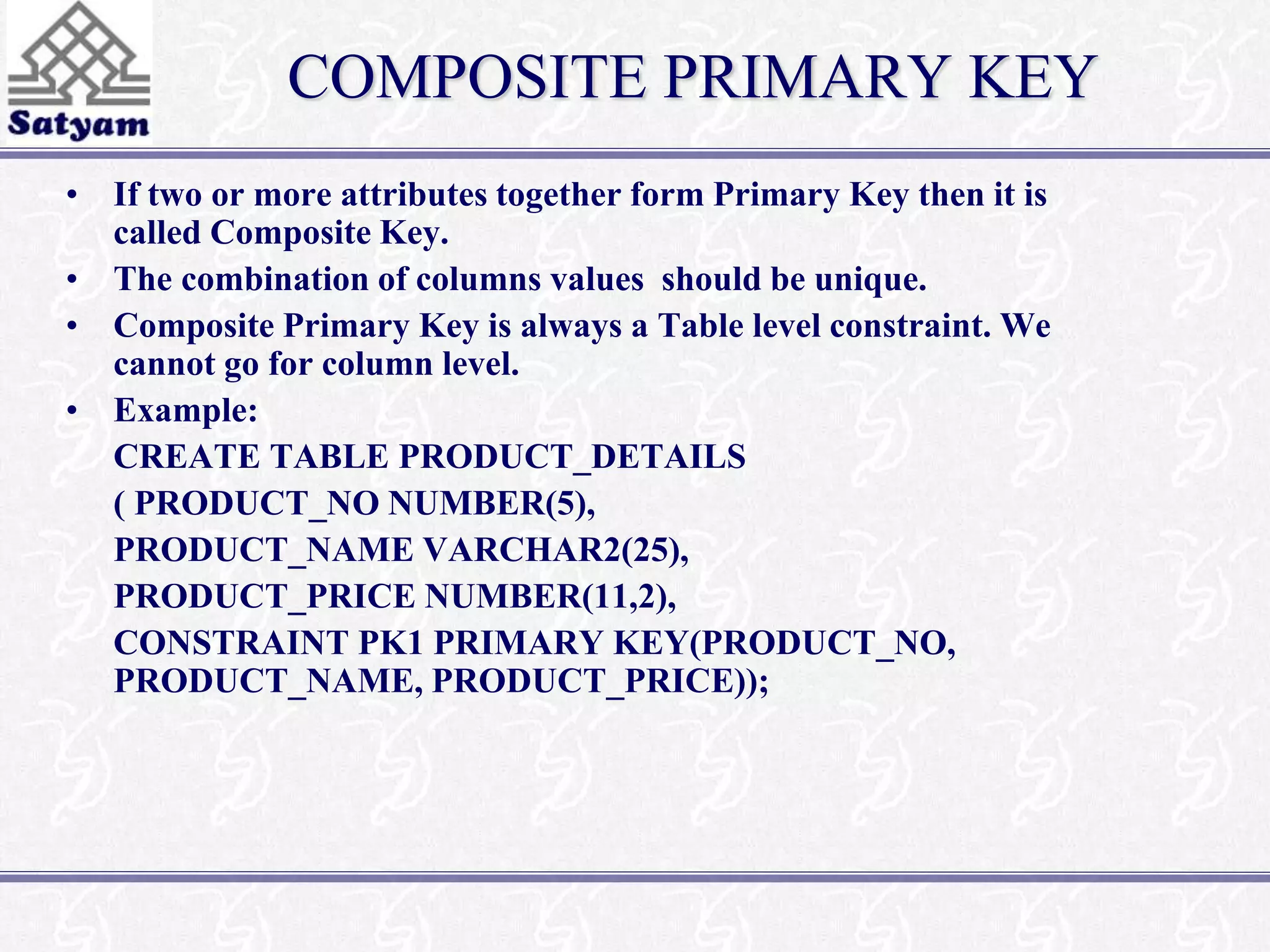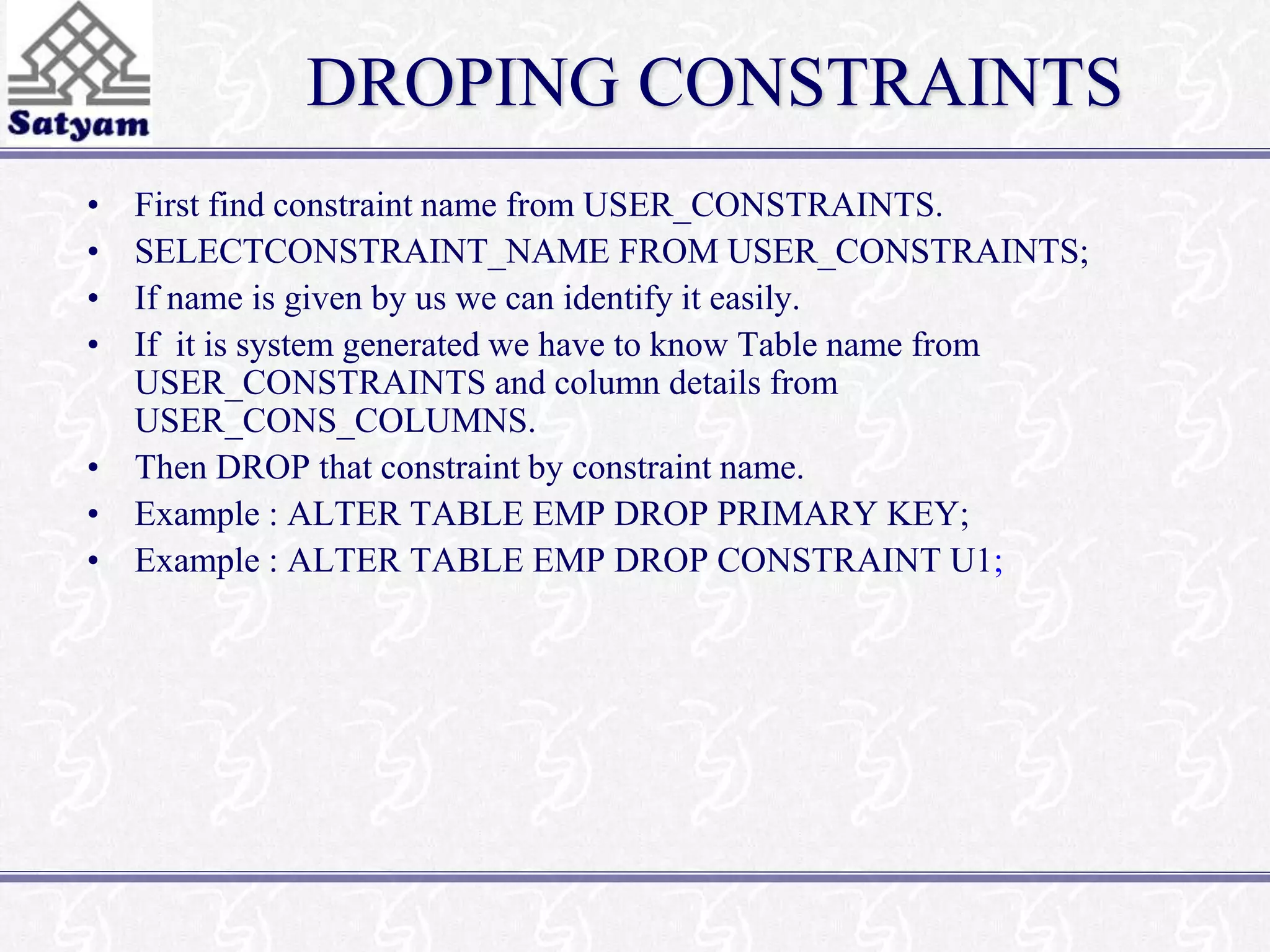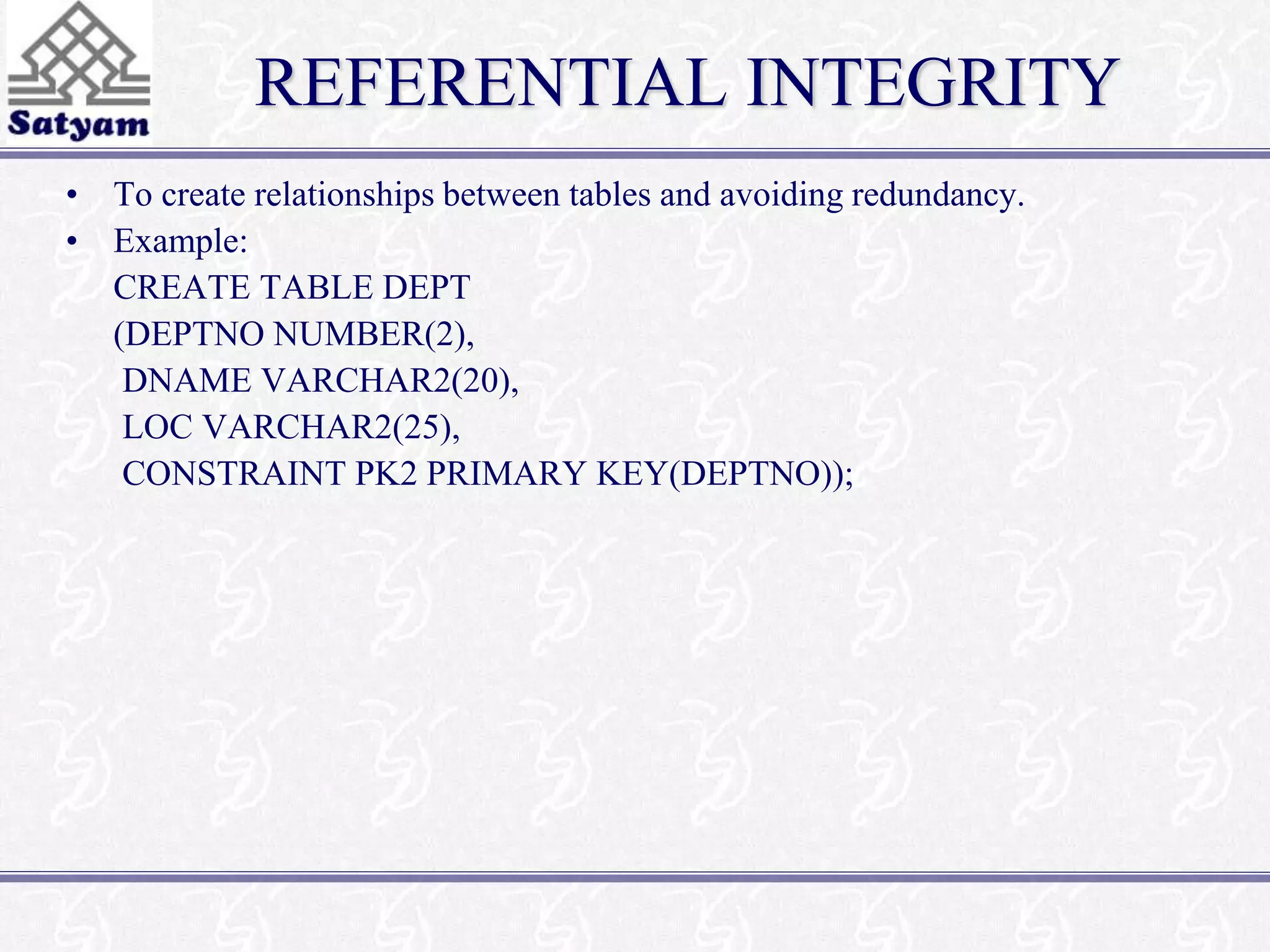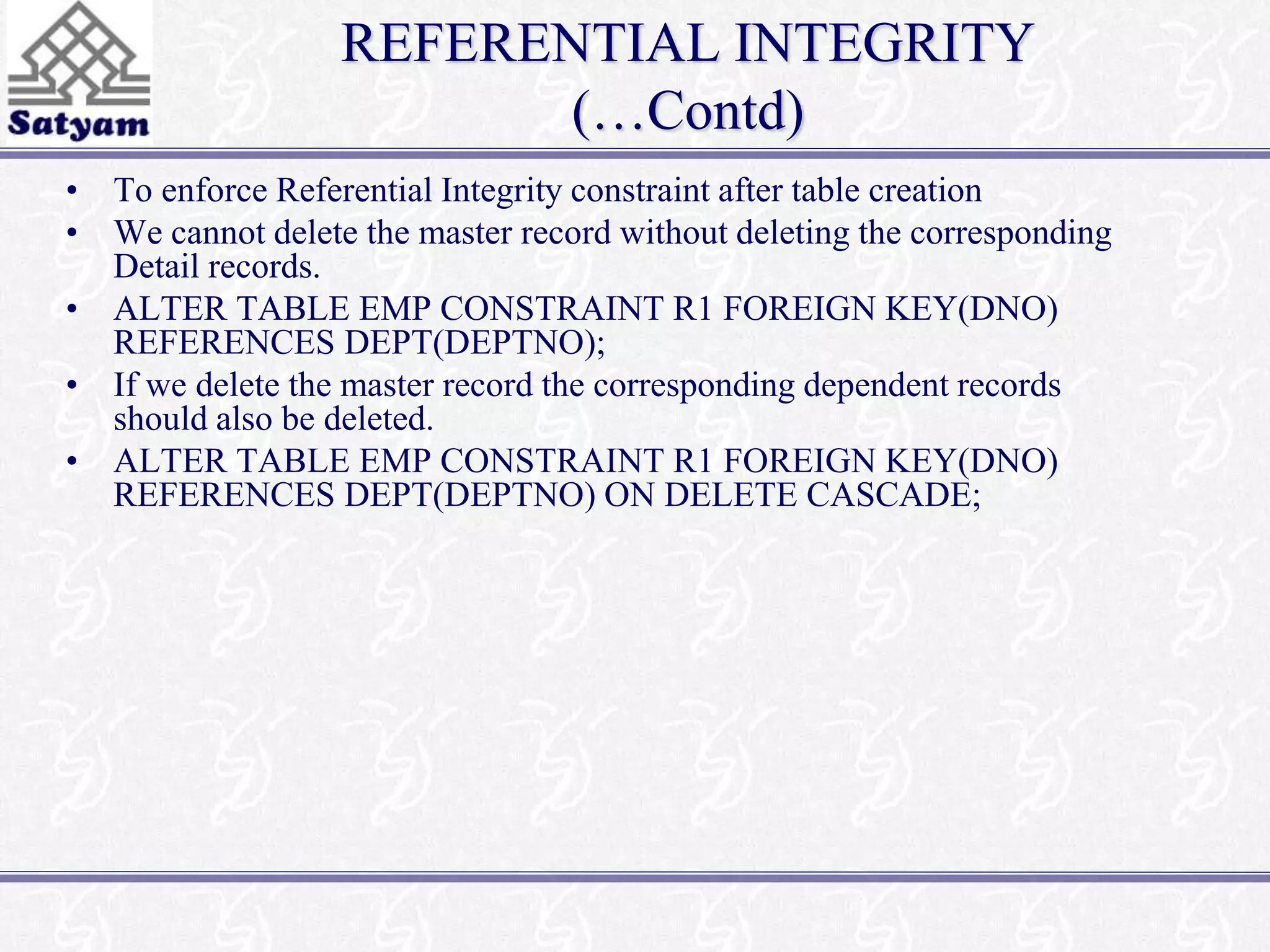This document provides an overview of SQL and database concepts. It discusses:
- The basic structure of tables, rows, columns, and data types
- The four main SQL languages: DDL, DML, TCL, and DCL and common commands like CREATE, INSERT, UPDATE, DELETE, etc.
- Database objects like tables, views, indexes, and how to query them
- Constraints like PRIMARY KEY, UNIQUE, NOT NULL and REFERENTIAL integrity
- Transactions with COMMIT, ROLLBACK, and SAVEPOINT
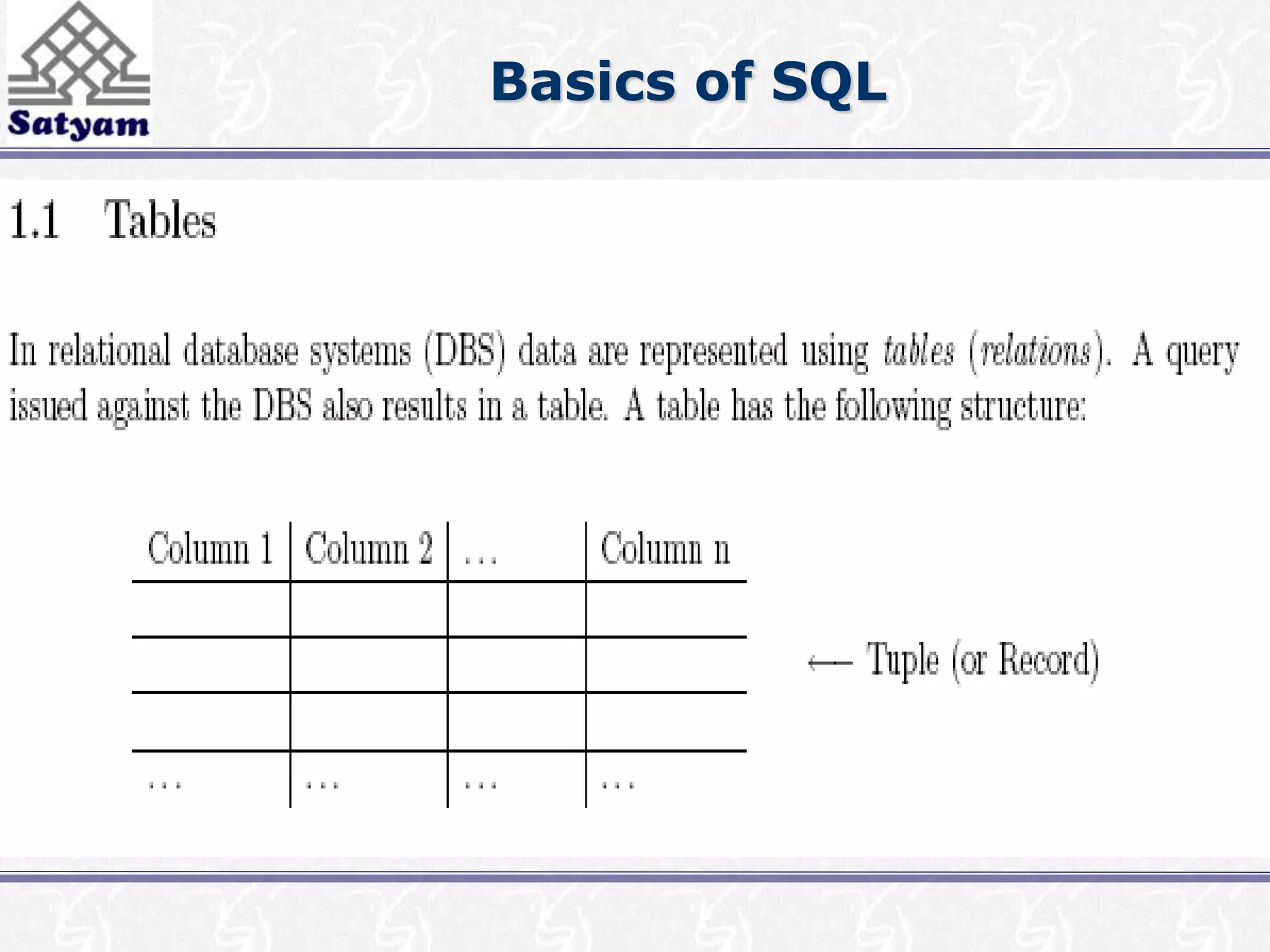

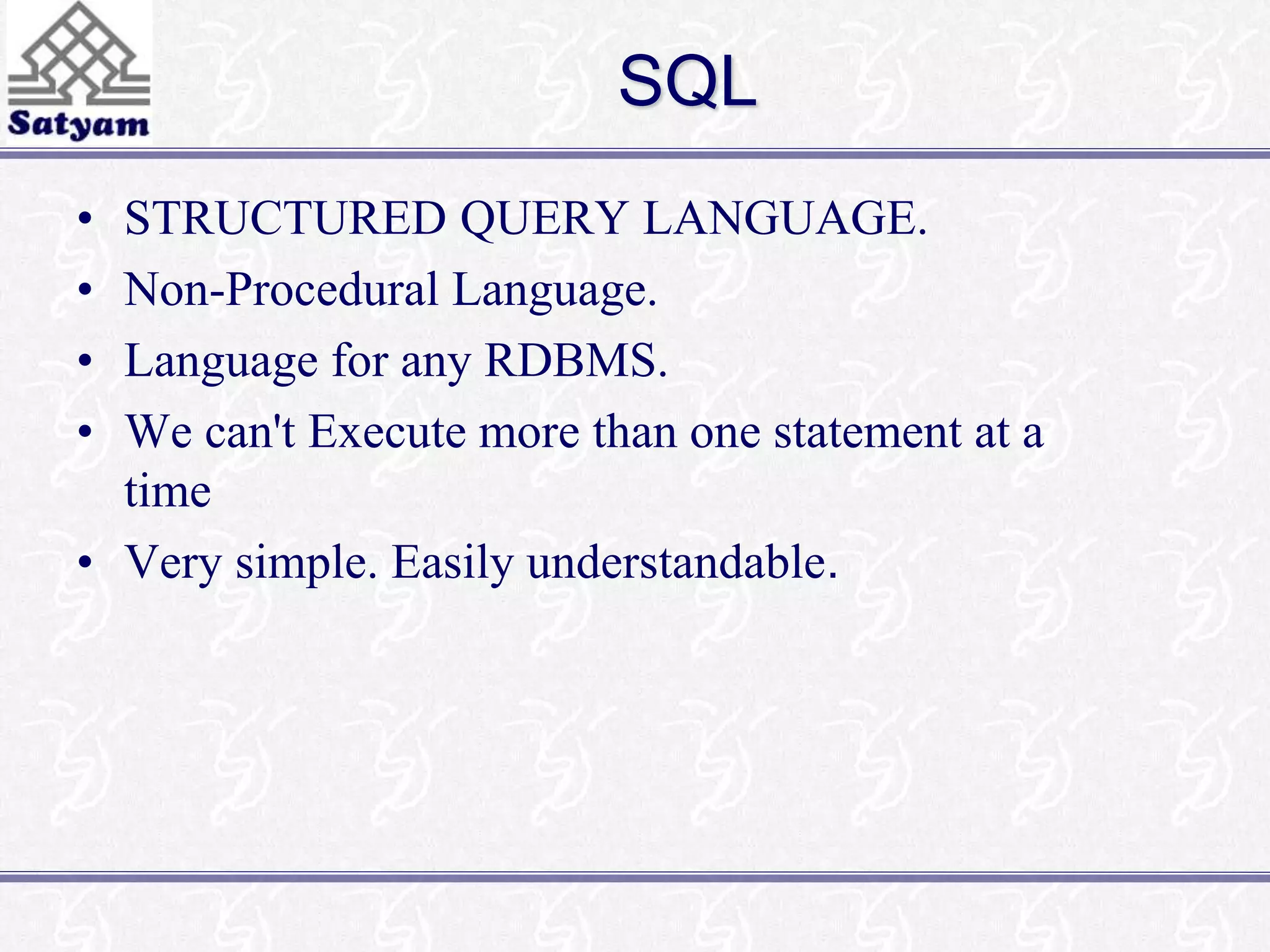
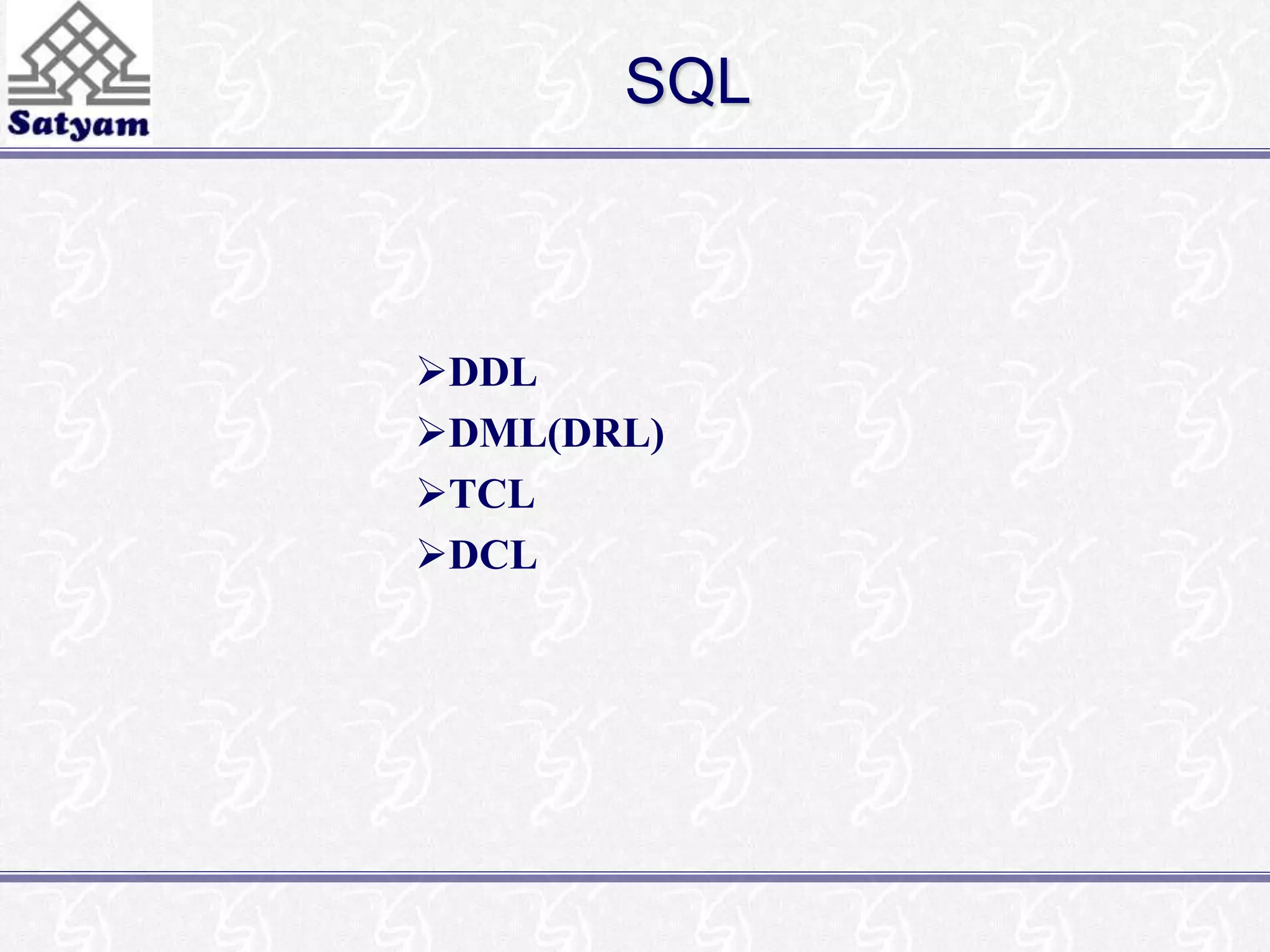
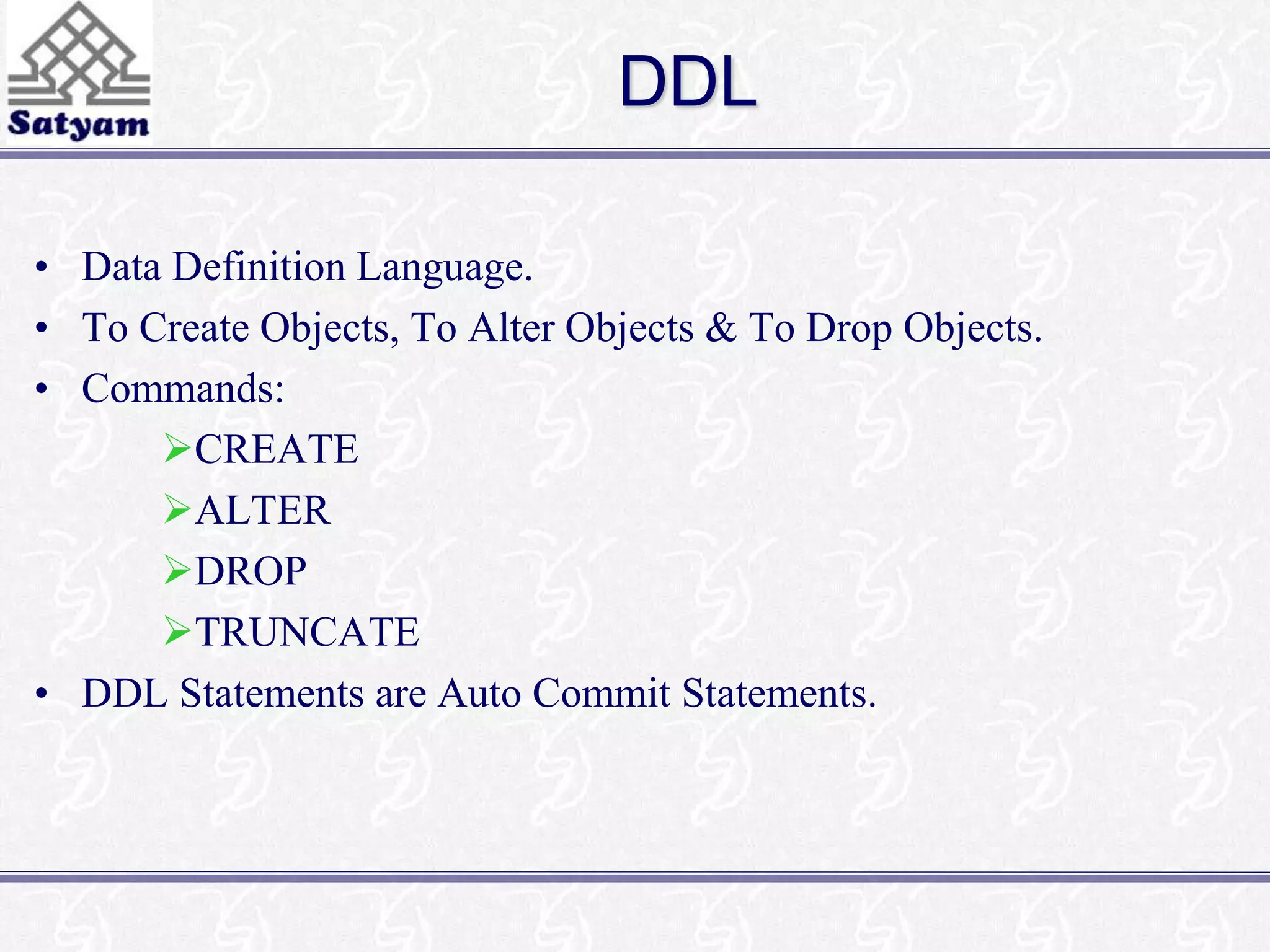

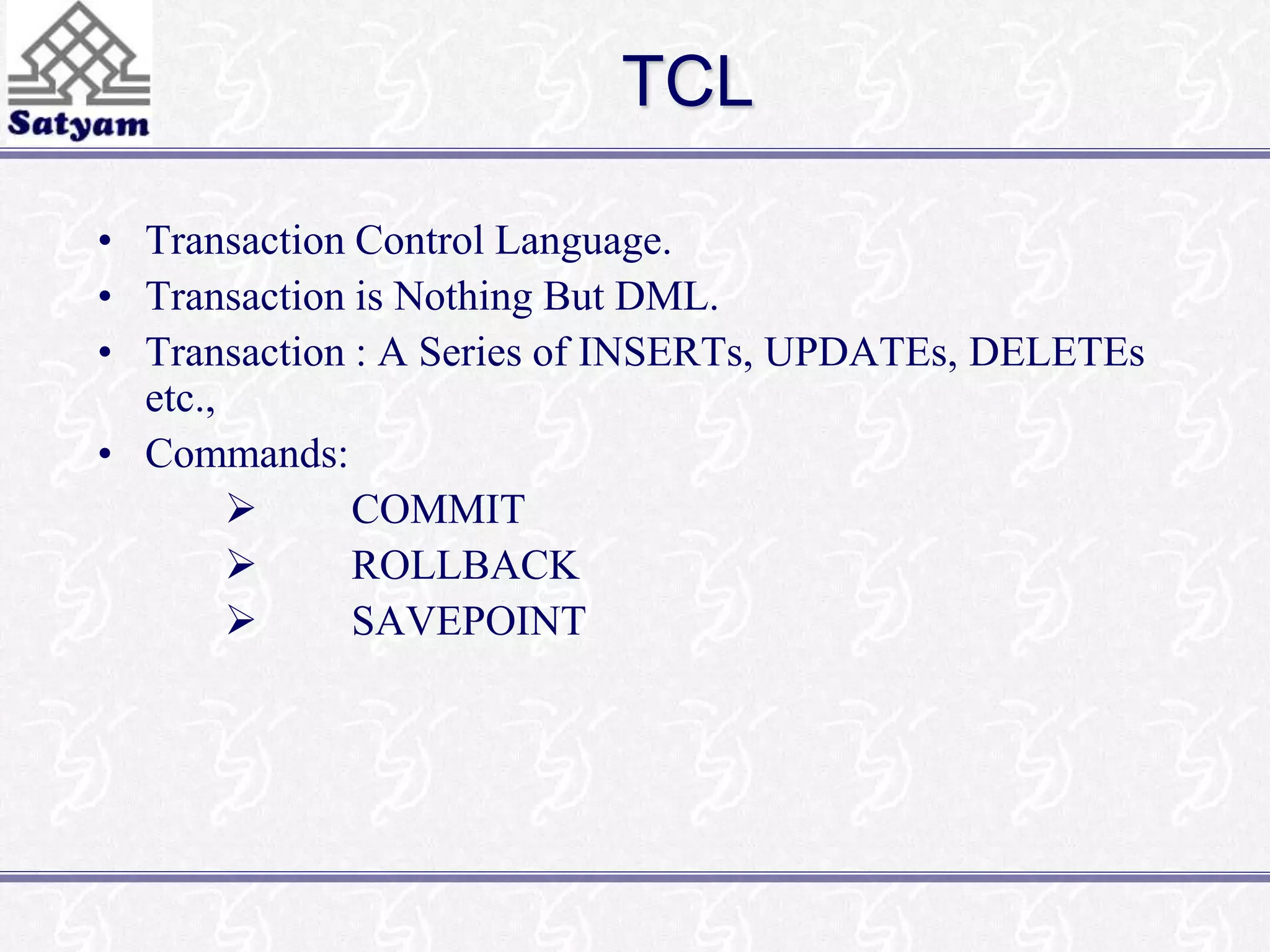
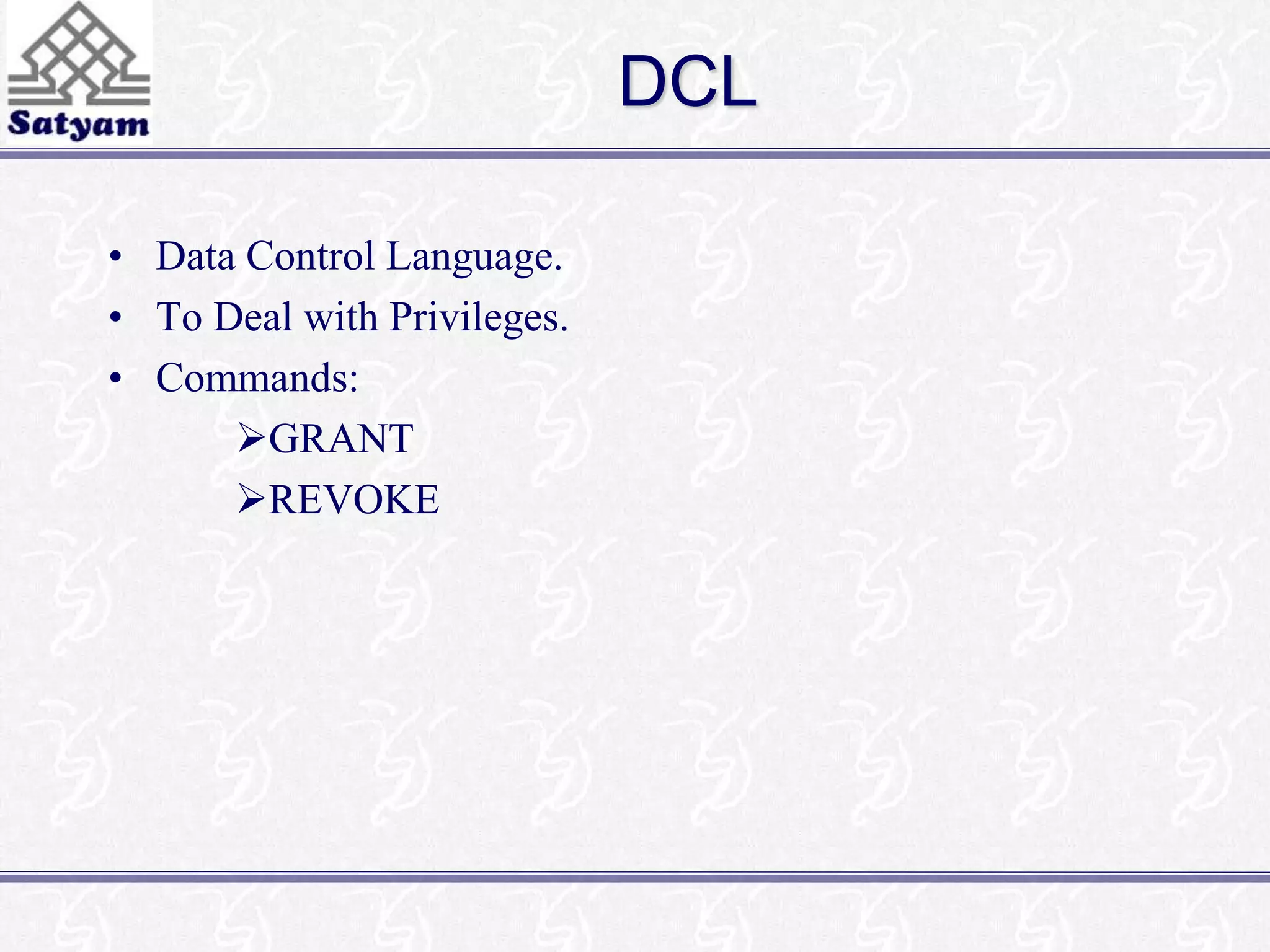


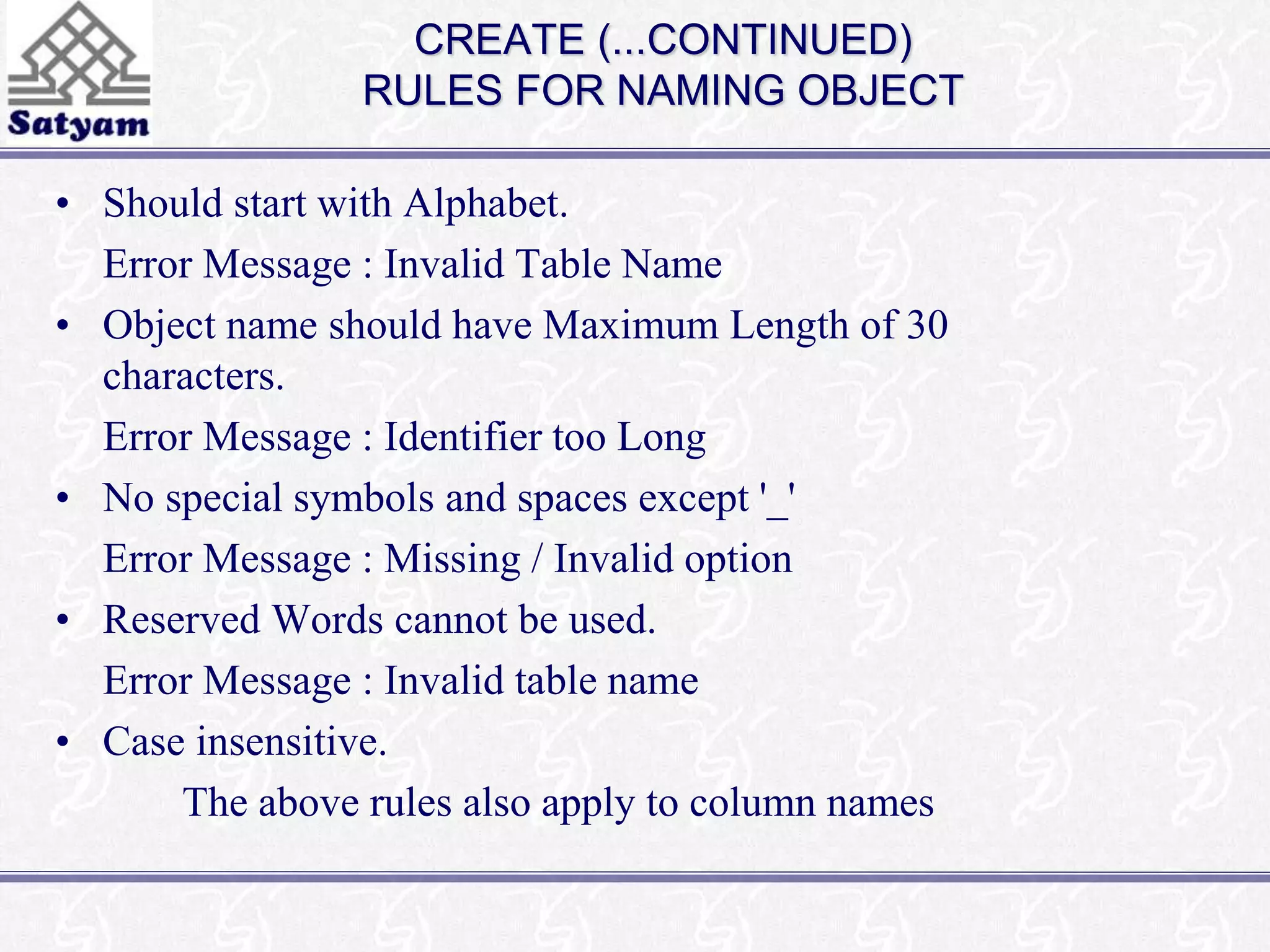
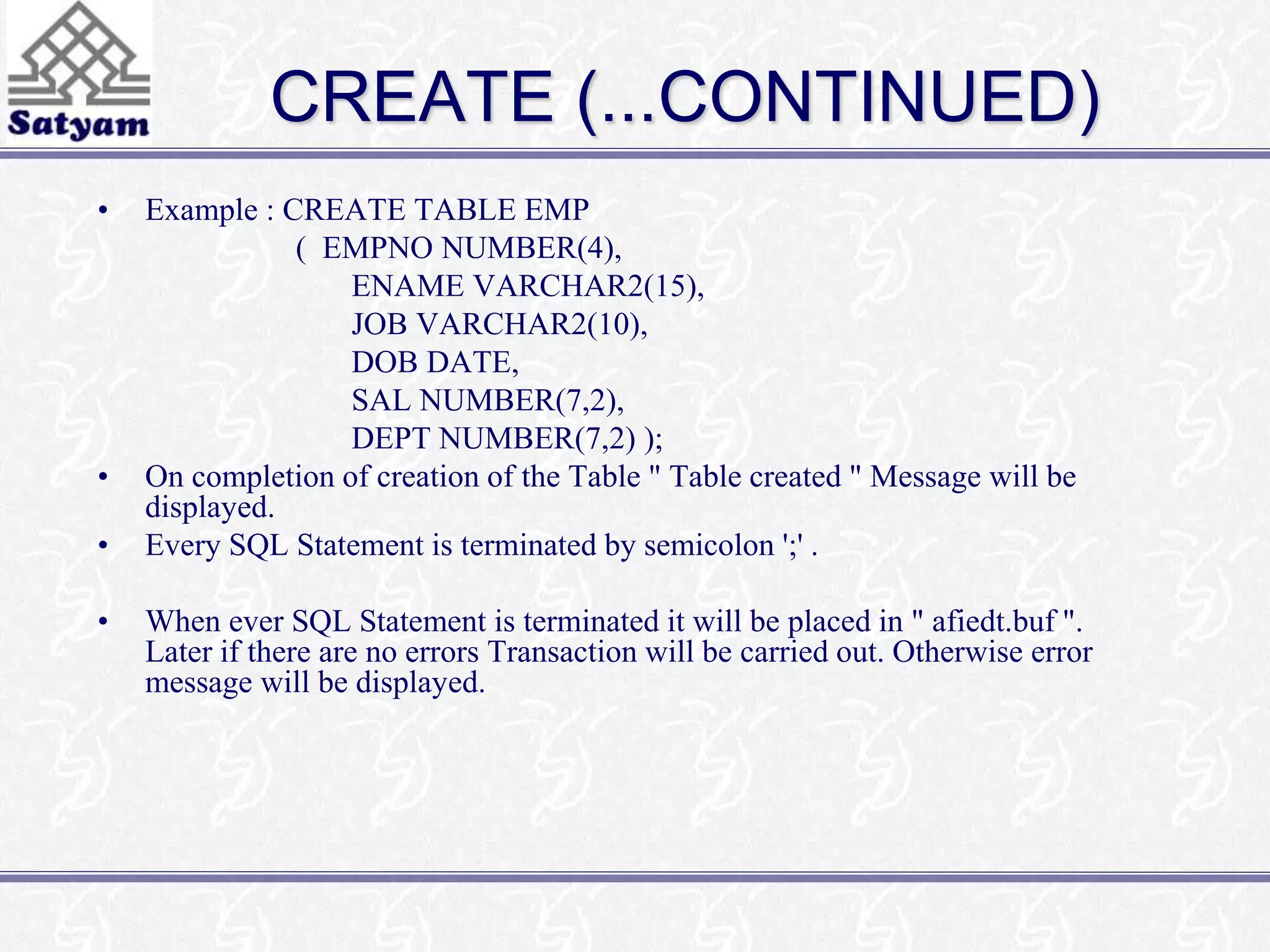
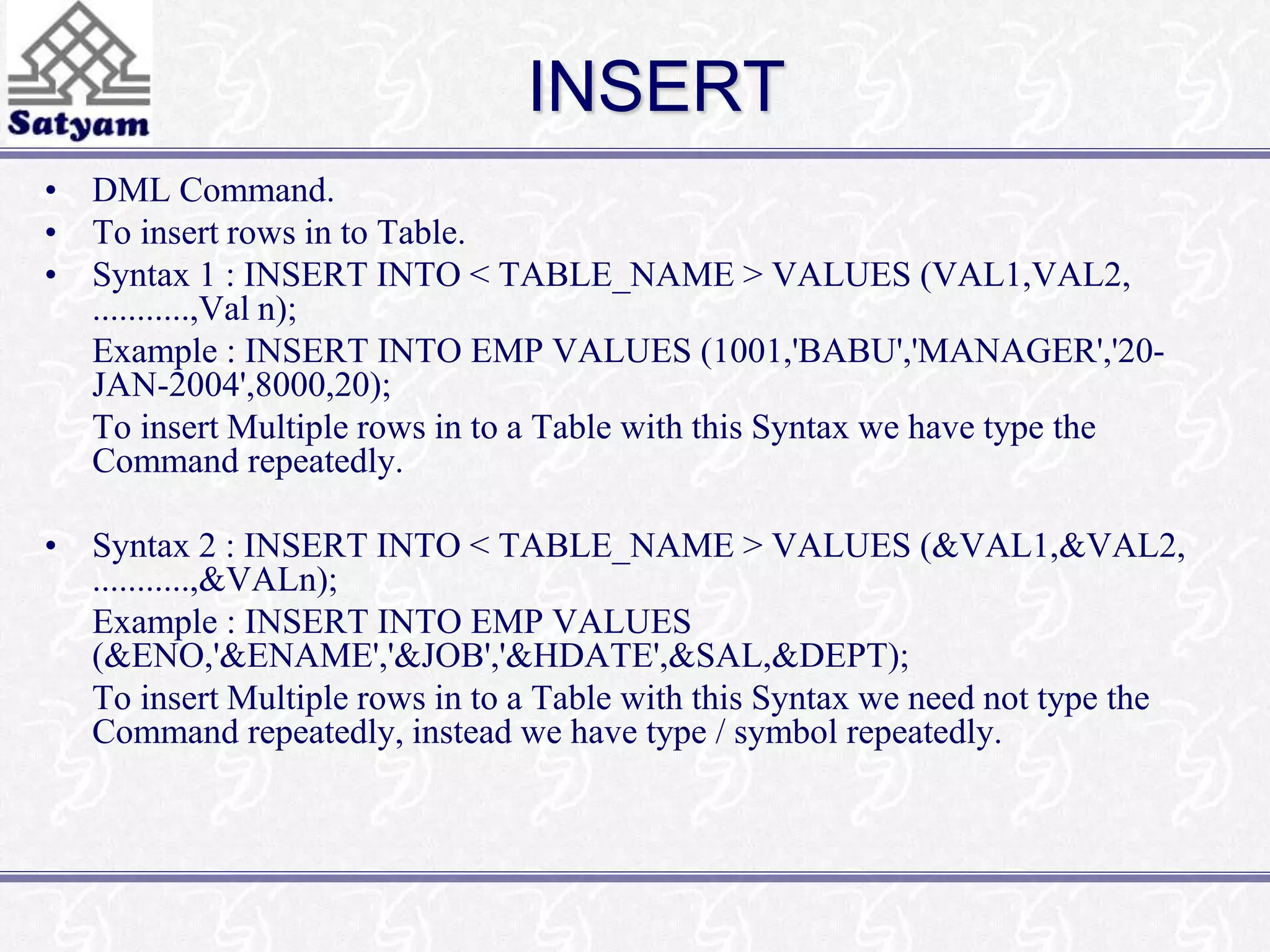
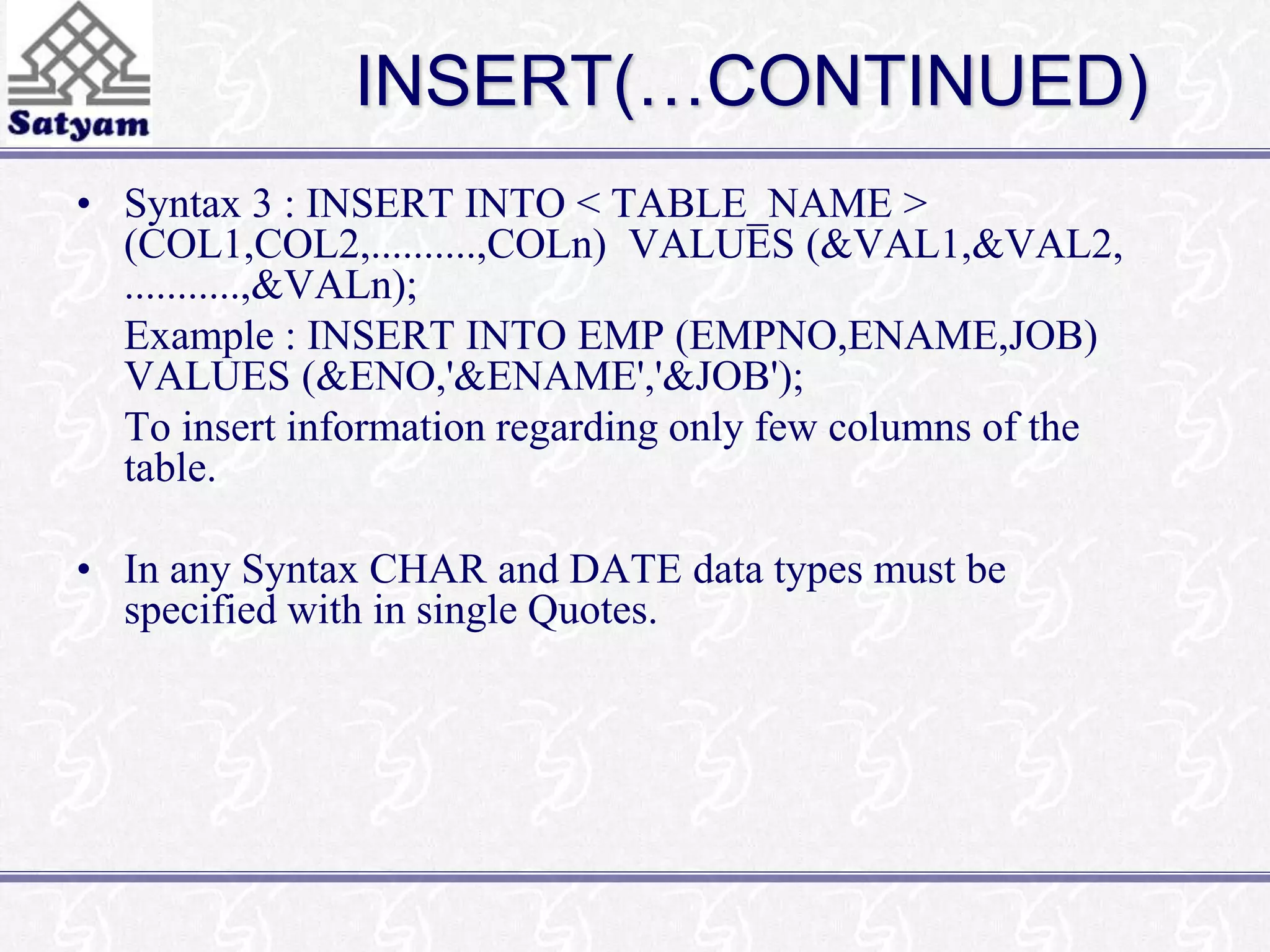
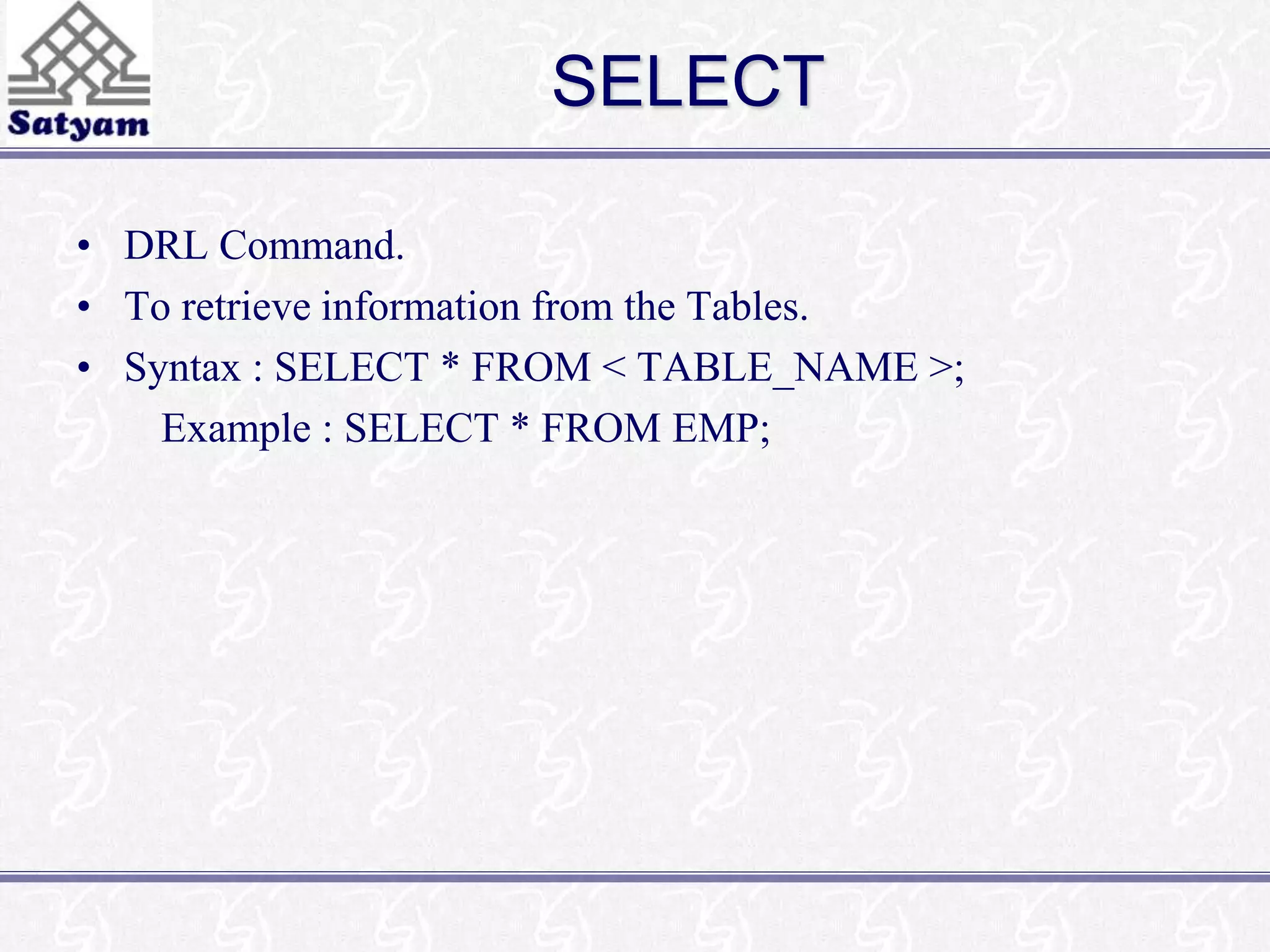
![ALTER
• DDL Command.
• To Modify any Existing Tables.
• Syntax : ALTER TABLE < TABLE_NAME >
[ADD | MODIFY | DROP | DISABLE | ENABLE]
(COL_NAME1 DEFINITION,
COL_NAME2 DEFINITION,
........
COL_NAME n DEFINITION )](https://image.slidesharecdn.com/8-141108032015-conversion-gate02/75/8-sql-16-2048.jpg)
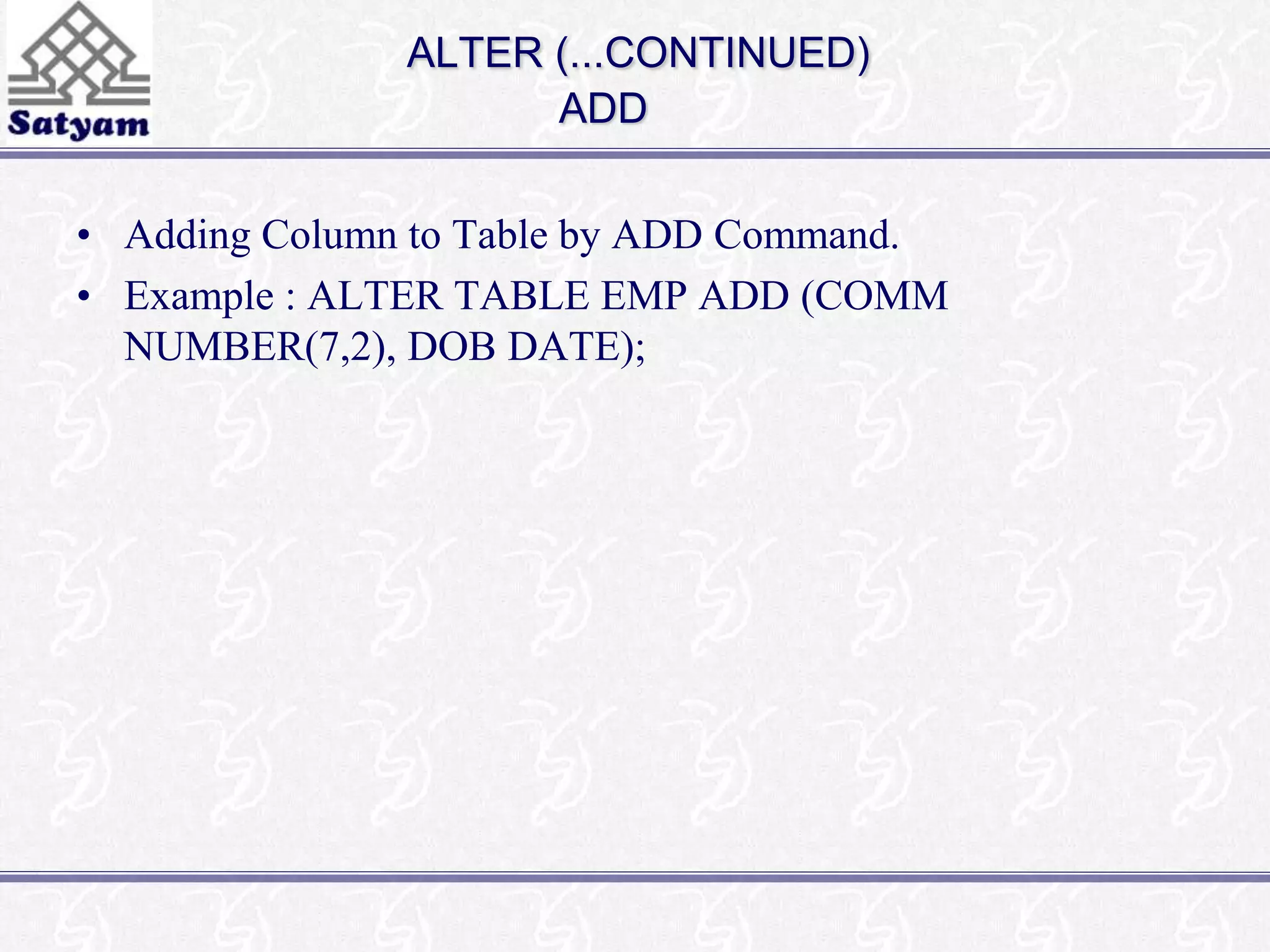
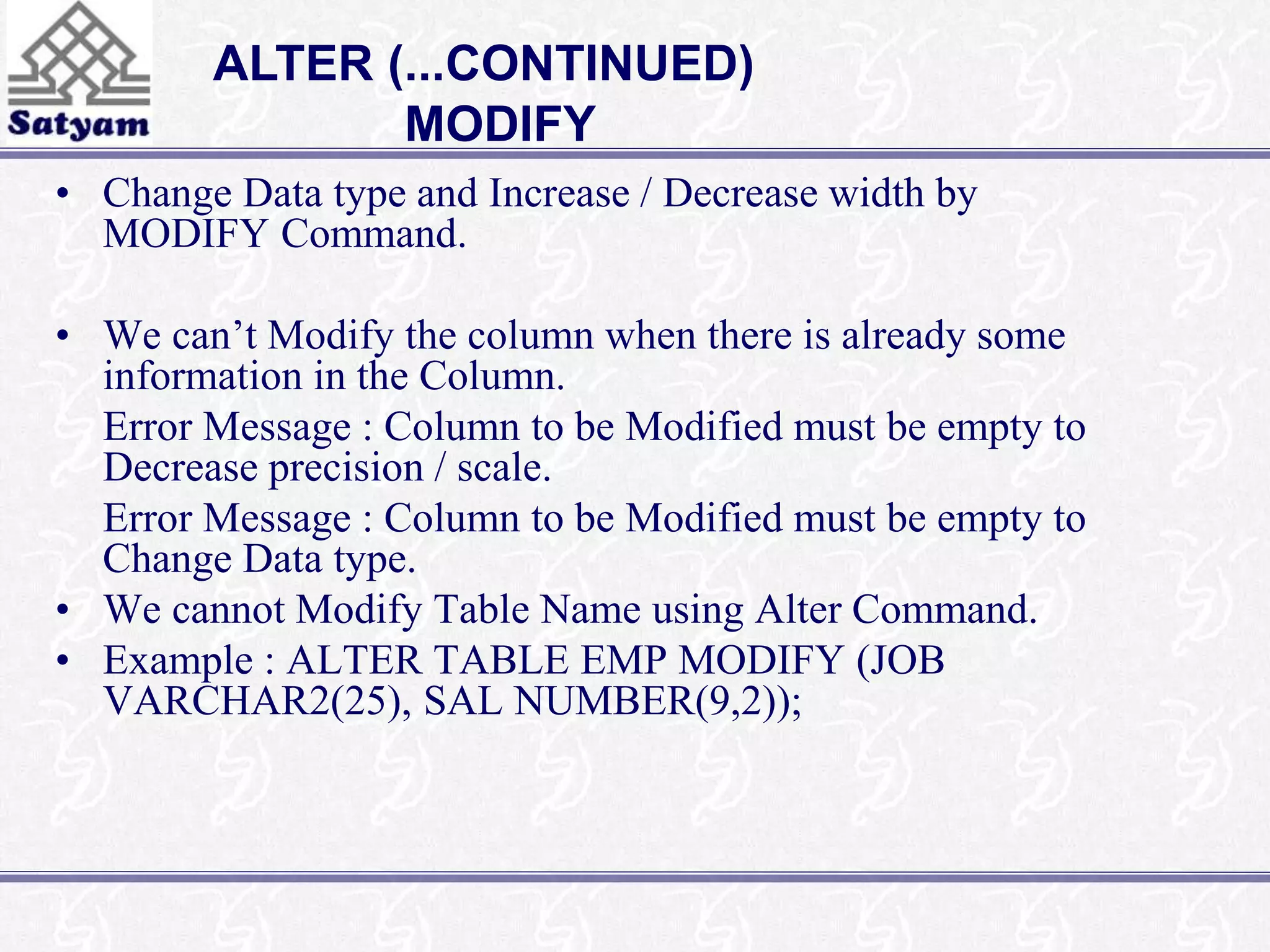
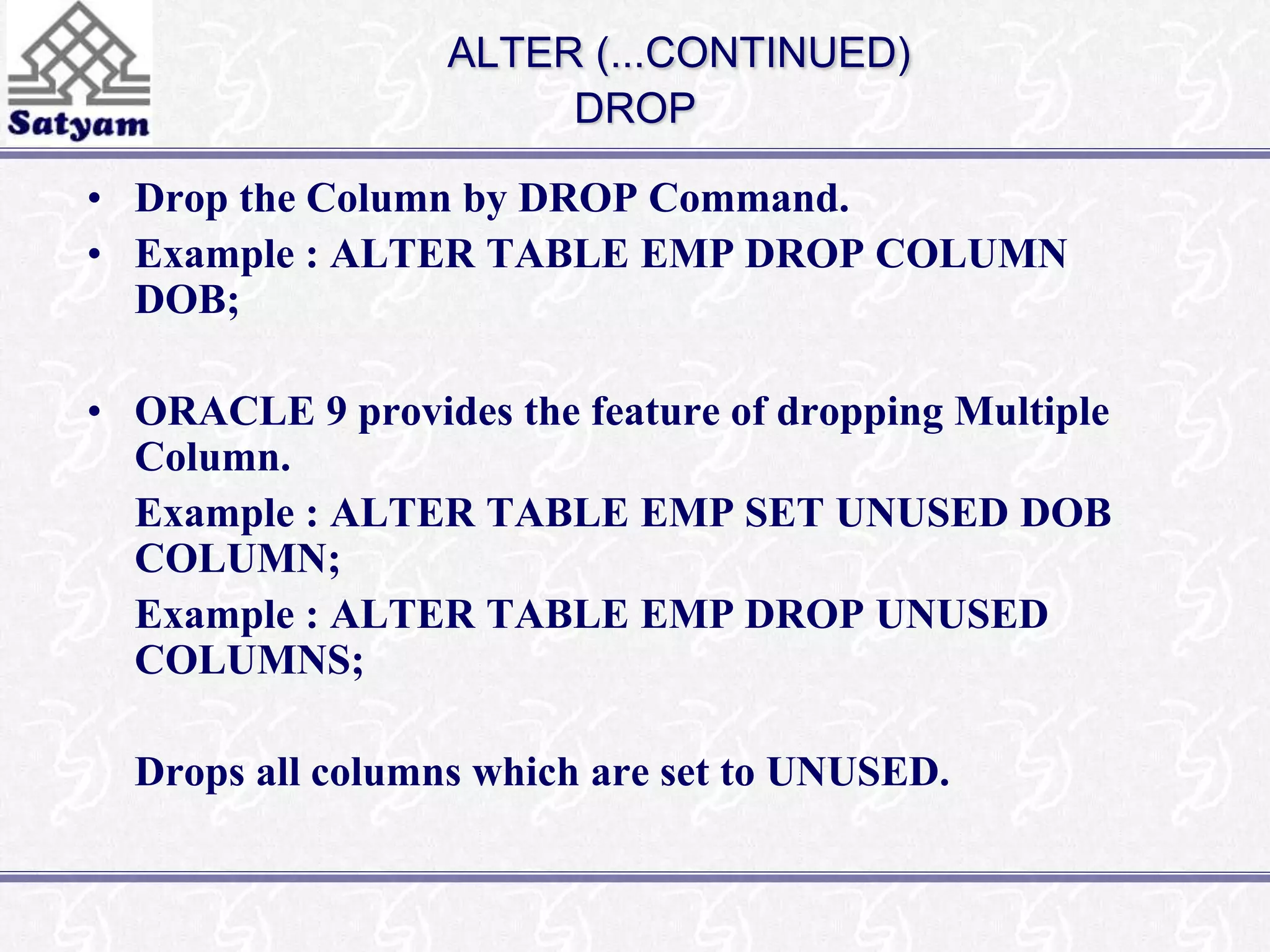
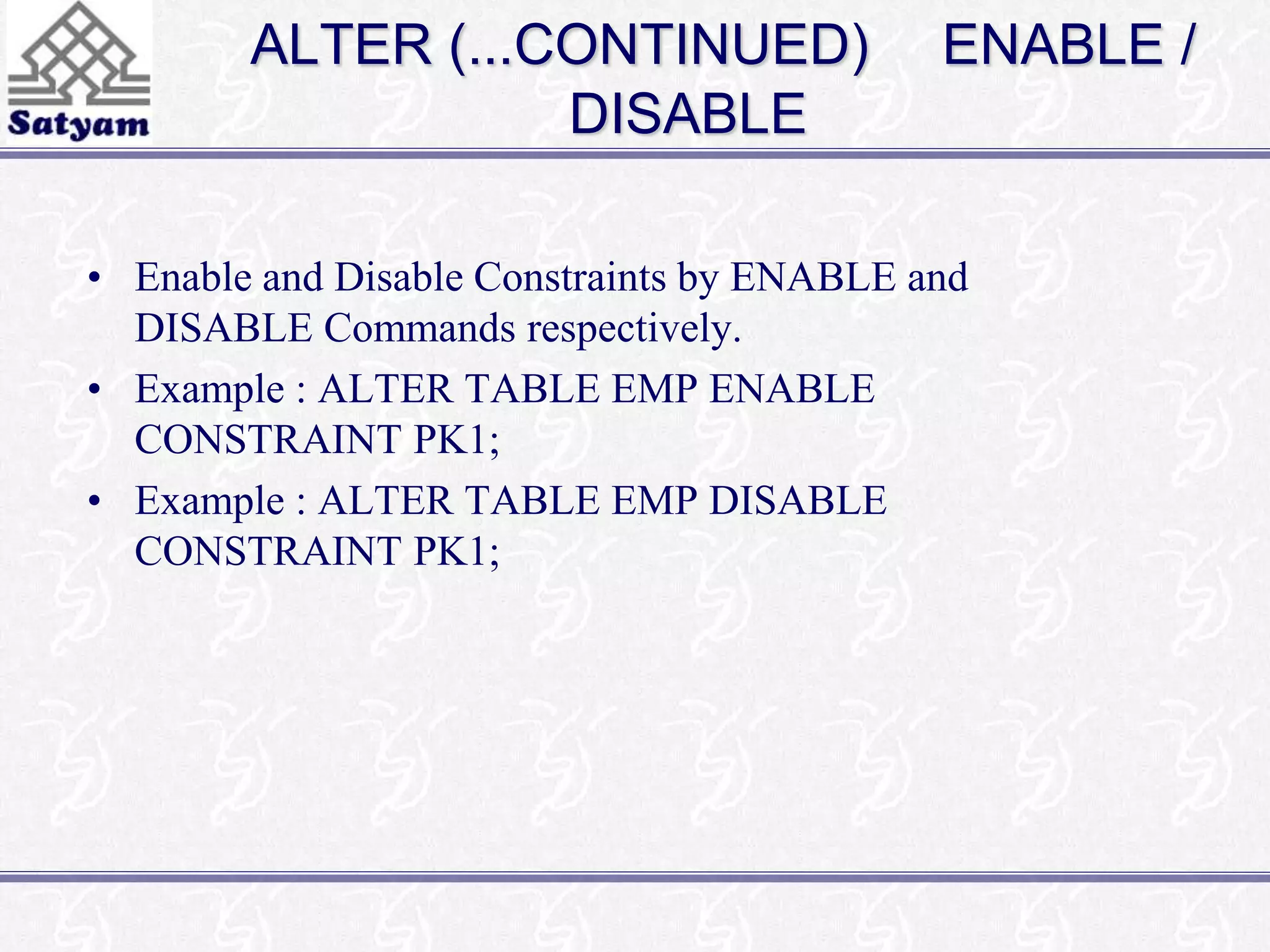
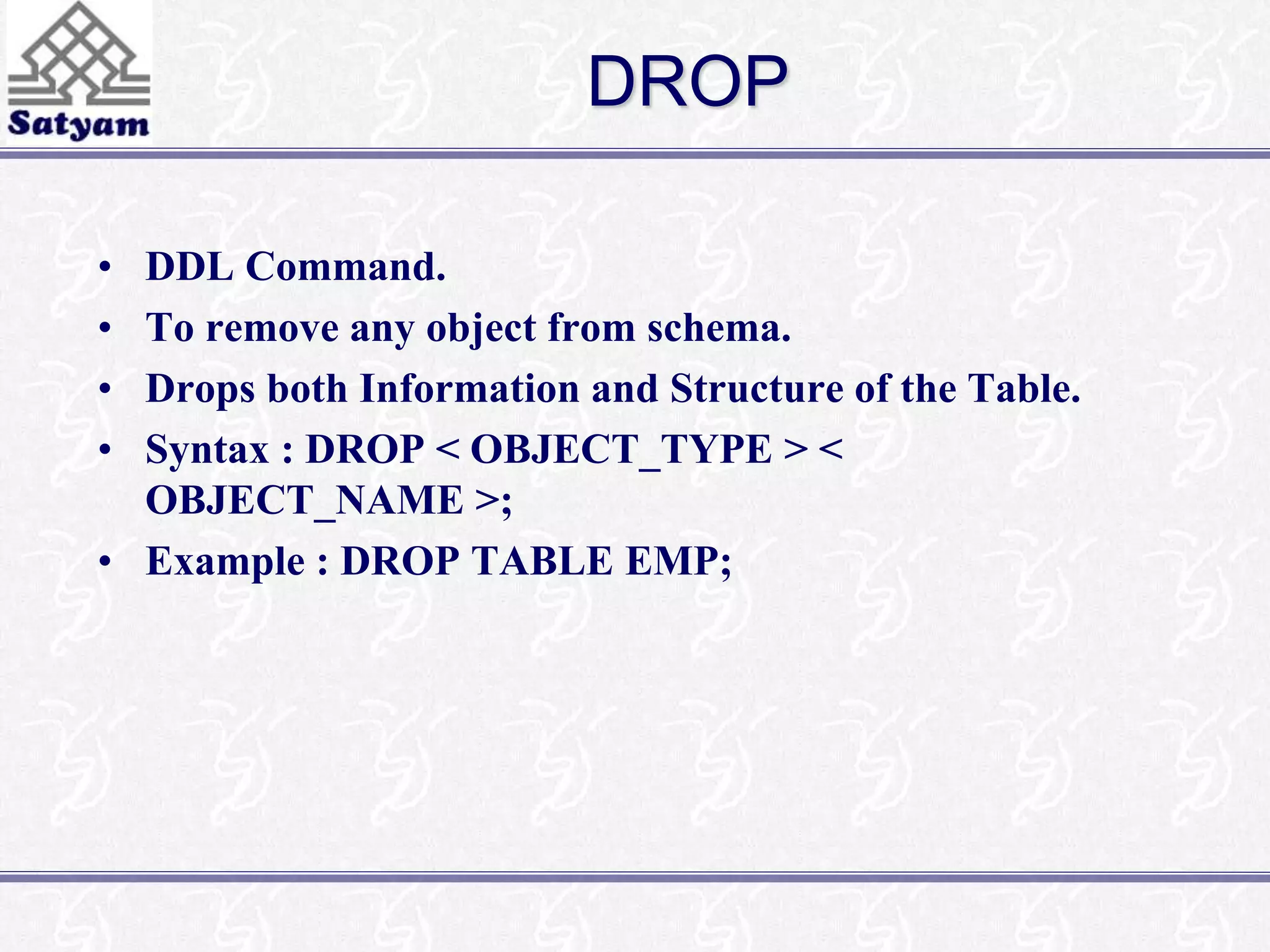
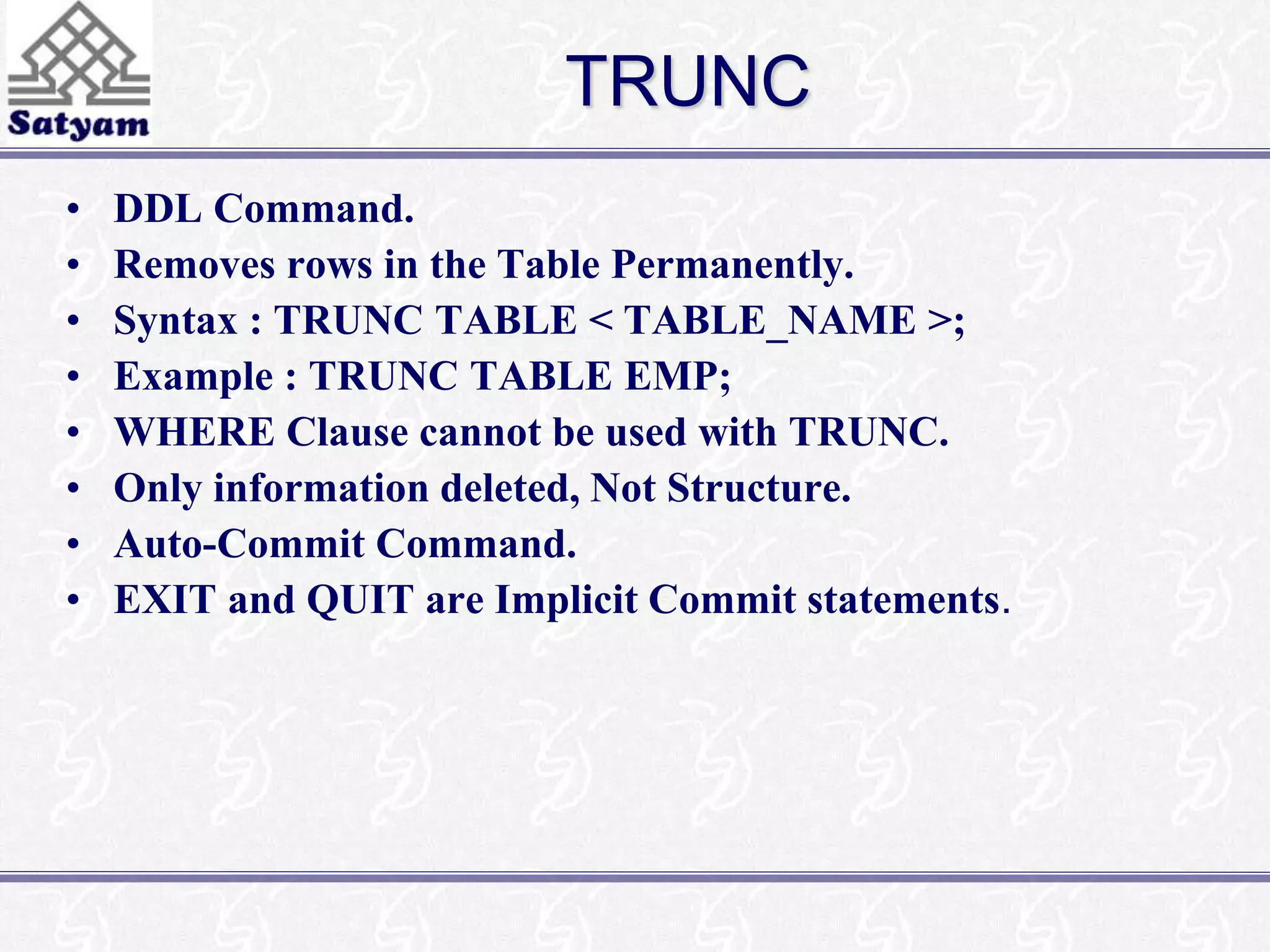
![UPDATE
• DML Command.
• To Modify any existing information in the table.
• Syntax : UPDATE < TABLE_NAME > SET <
COLUMN_NAME > = < VALUE > [ WHERE
<CONDITION> ];
• Example : UPDATE EMP SET SAL = 9000 WHERE
EMPNO=1002;
• To UPDATE multiple columns with in a row separate
them by Commas.
• Example: UPDATE EMP SET SAL =
9000,COMM=1000 WHERE EMPNO=1002;](https://image.slidesharecdn.com/8-141108032015-conversion-gate02/75/8-sql-23-2048.jpg)
![DELETE
• DML Command.
• To Delete rows from the Table.
• Syntax : DELETE FROM < TABLE_NAME > [ WHERE
<CONDITION> ];
• If Condition not specified all rows of the table will be
deleted.
• Example : DELETE FROM EMP;
• If Condition specified all rows of the table satisfying the
Condition will be deleted.
• Example : DELETE FROM EMP WHERE JOB =
'MANAGER‘;](https://image.slidesharecdn.com/8-141108032015-conversion-gate02/75/8-sql-24-2048.jpg)
